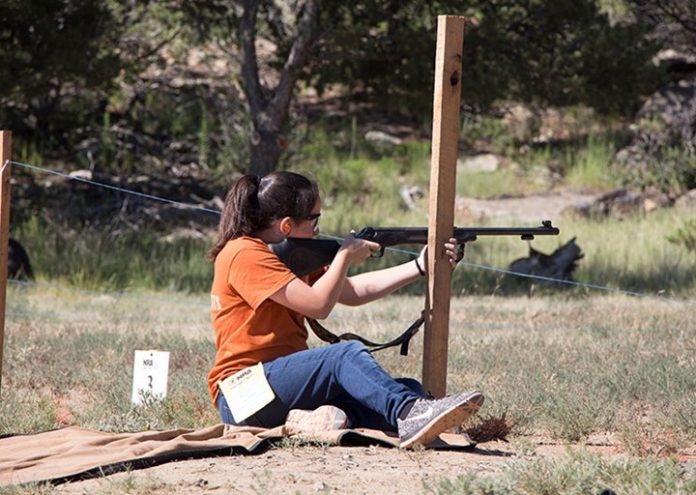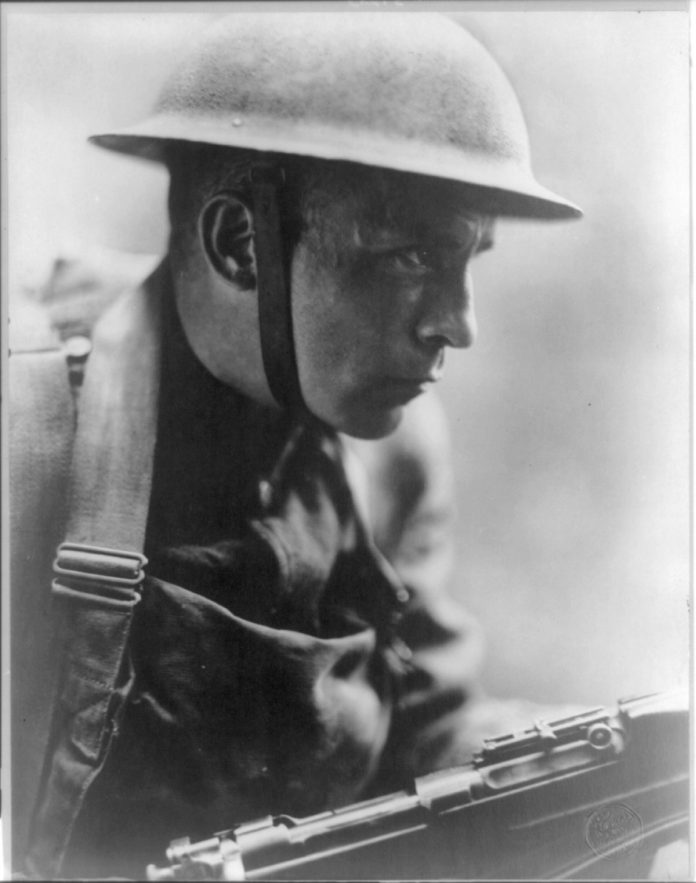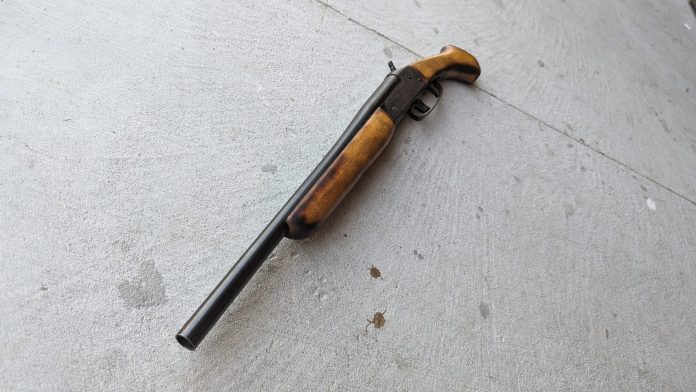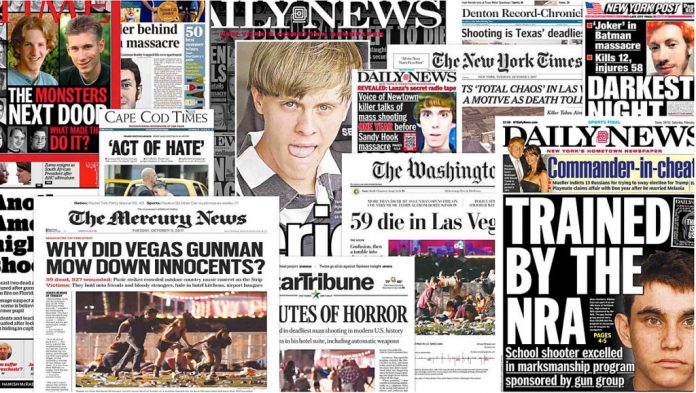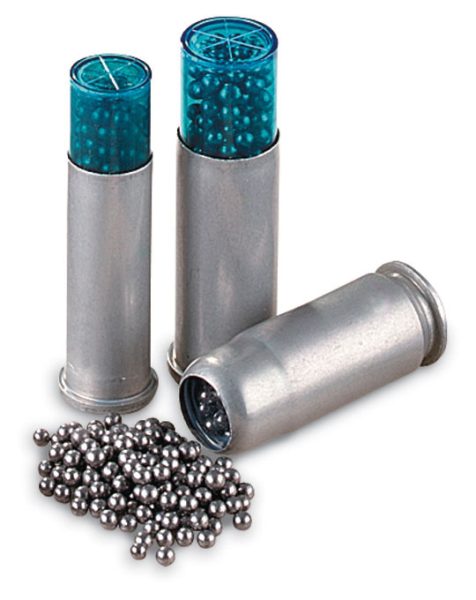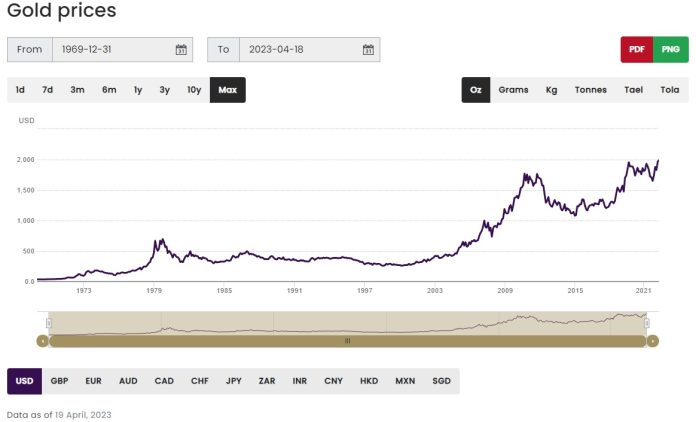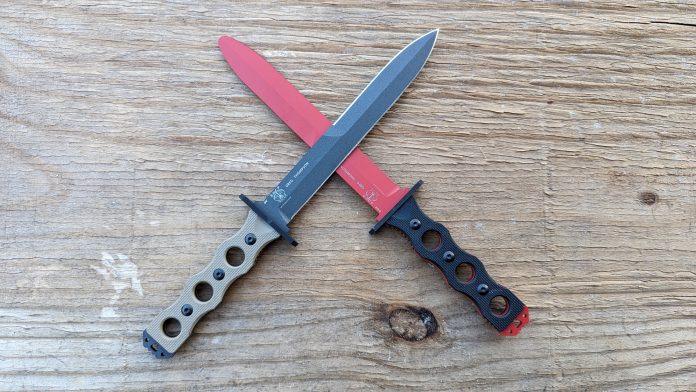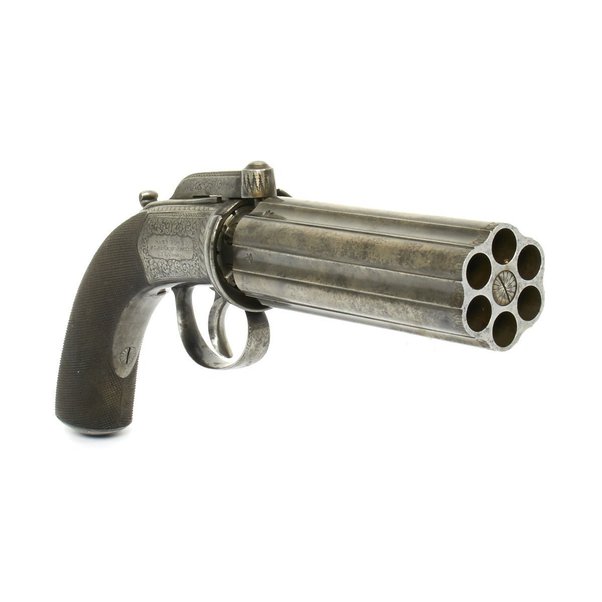Guys let’s be honest. The M14 was the worst 308 battle rifle and the only reason people still love it is because they don’t know anything about shooting.
Three Things You Should Never Do To A New Shooter
Getting new gun owners to the range is a public service and a means to preserve our rights. Court battles, giving money to gun rights orgs, and demonstrations all help, but creating new shooters is the easiest way to preserve rights and improve public safety in regard to firearms. Sadly, some parts of the gun community do this in the dumbest way possible. I’m leaving out an expletive, but you should know it’s that dumb. There are three behaviors and habits I think we should ditch to ensure we are doing our best for every new shooter we take to the range.
Using Guns They Can’t Handle
I bet a lot of us were victims of this. Friends, dads, uncles, and whoever else thinks it’s hilarious to hand an inexperienced shooter a harsh recoiling weapon and to watch them get hurt. They might say its to just ‘make them jump’ or hide it by saying ‘it treats them respect’, no. No training, no preparation for the recoil, just hand them the gun and sit back and laugh. This is not only dumb but dangerous.
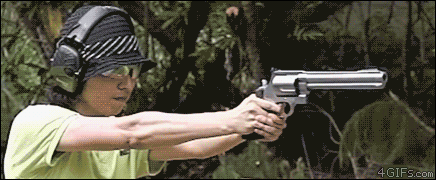
A young lady lost her life when some idiots handed her a magnum-powered revolver. The recoil spun the gun backward towards her head, and she pulled the trigger again by accident as the gun twisted in her hands, killing herself.
That’s an extreme example but a real one. Handing someone a powerful rifle, handgun, or shotgun before they are ready for it is dumb, and whoever does it is dumb. It turns people away from shooting and makes the shooting community look like jerks. Causing a new shooter pain and embarrassment is a surefire way to keep them away from the range and leave a bad taste for gun owners in their mouth.
Having Tough Shooting Standards
Let’s be clear. All shooters should face and deal with tough standards when it comes to dealing with safety. Safety is always our number one priority, and that should be established immediately and enforced regularly. That’s not what I mean when I say tough standards. I love teaching firearms, and I commonly teach a fairly basic safety course in my community. Kids and adults both attend, and I’ve noticed an odd trend.
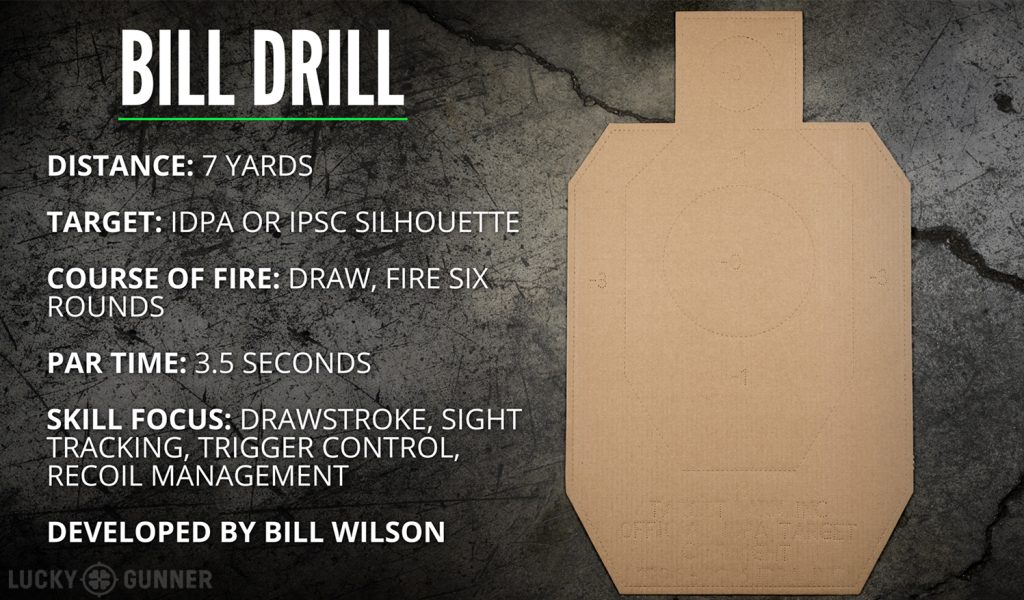
I hear stories about how someone else tried to teach them, and they couldn’t hit the broad side of a barn! They were everywhere. They hated it, etc. I’ve also seen adults putting pressure on their kids in these safety classes during the live fire portion that I tactfully put an end to. People get this crazy idea that new shooters should be able to hit small targets with ease and can’t seem to understand why a new shooter can’t do that.
This creates frustration in new shooters. When I teach new shooters, I use a great big target devoid of numbers and scores. Just try to hit the big piece of paper. New shooters should be relaxed and safe, not trying to hit B8 targets at fifteen yards with a 9mm.
Showing Off Your Skills
There is a big difference between demonstrating a method, technique, etc., and just showing off. When you take a new shooter to the range, the focus should be on their ability to shoot. This seems to be most common when one person is teaching their significant other how to shoot. The natural inclination to show off a bit comes into play.
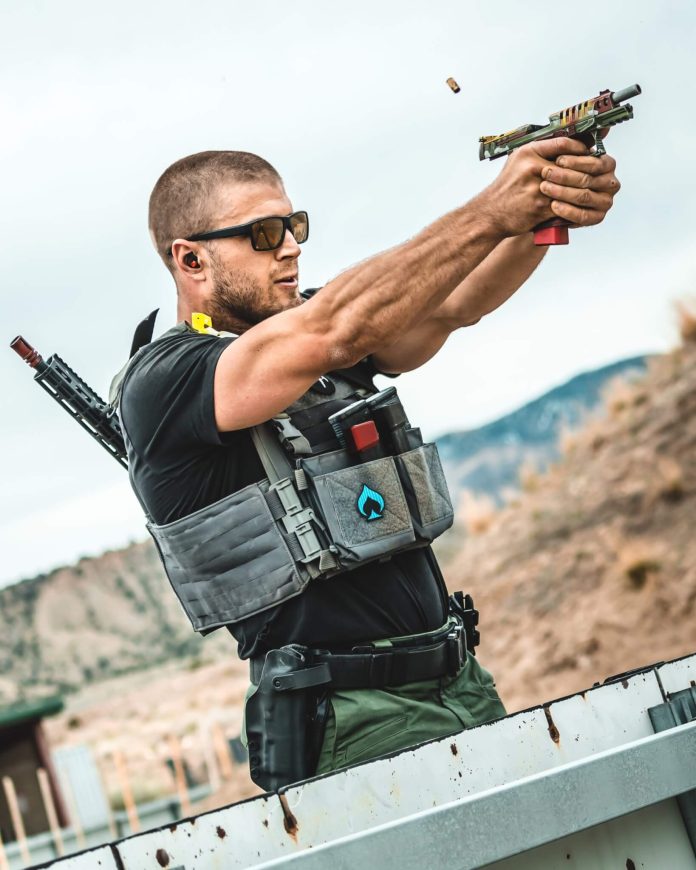
Ignore it. Make the day about them, give them the attention and the range time. Make it something that’s not about you and the gun. Typically when I teach the basics, there is not much shooting I need to do. I can show a lot of the basics of grip, stance, etc., with a blue gun before we step up to the firing line. At the firing line, I may fire a round or two to show how it comes together and what one can achieve, but that’s it. Demo, then get them shooting.
After that, coach, inspire, educate, etc. Bring the non-gun to the firing line. That way, you don’t have to pass the gun back and forth, and it’s always in their hands. A new shooter not only doesn’t care about your Bill drill time, but they also don’t even know what that is.
Make a New Shooter
Protest, write your representatives, send money to gun organizations, and take a new shooter to the range. That’s how you preserve the second amendment and the freedom we hold so dear. A properly instructed new shooter is a safe shooter and a potential freedom defender. That’s a valuable resource, so don’t waste it being dumb.
What the Doughboy Really Carried In World War One
Imagine you’re a twenty to-year-old 2nd L.T. in the U.S. Army. You joined the American Expeditionary Force in Europe in 1917. The Great War is raging on. You have an infantry platoon to lead, so what weapons have the army issued you? That’s an easy answer. You’re clearly armed with a Springfield M1903 and an M1911, right? Maybe, but in reality, the armament of the American doughboy was not toting M103s and M1911s into combat.
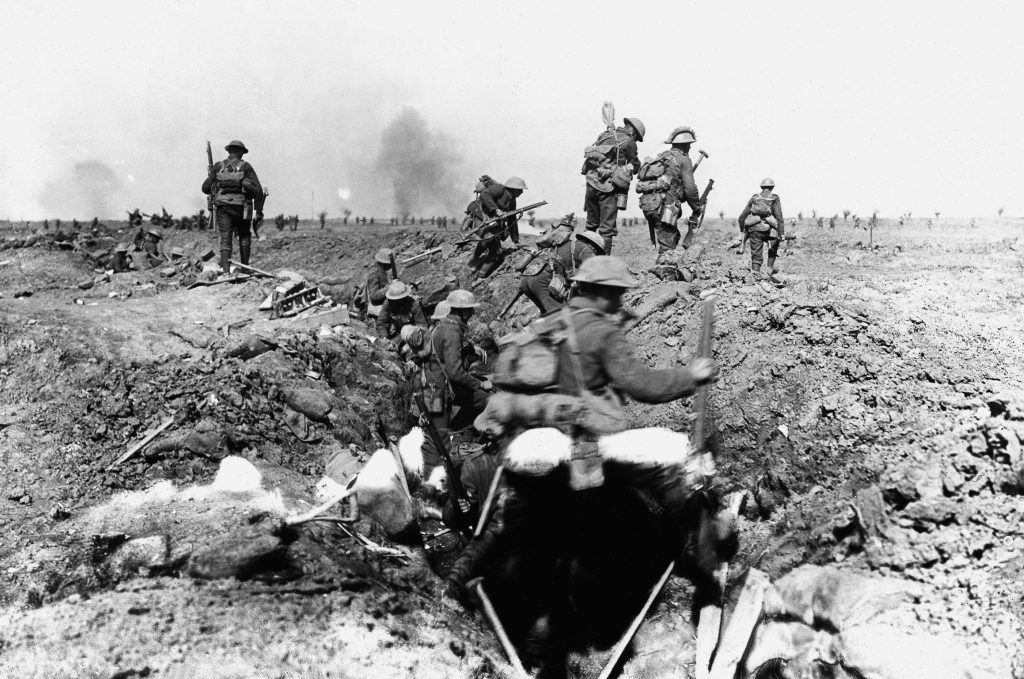
The American military wasn’t ready for World War 1. In fact, that’s a trope that’s so often repeated. America is ready for the last war. It’s why the push to Bagdad utilized soft-skin humvees and why troops in Vietnam were still carrying WW2-era weapons.
When we entered World War 1, there simply weren’t enough M1903 and M1911s to go around. The U.S. Army had to supplement the massive force they had recently built with alternatives. While the M1903 and M1911 were the official weapons of the U.S. Army, they were the minority of weapons issued. So what handgun and rifle armed doughboys in World War 1?
The Doughboy Rifle – The Enfield M1917
The Brits were fighting in the war for years before Americans entered the fray. They needed rifles, so they contracted with Winchester, Remington, and Eddystone to produce an Enfield variant known as the P14. This would be a .303 caliber rifle designed to help arm the British military in a time of crisis.
When the United States entered the war, they had less than a million Springfield M1903s. In their efforts to arm their doughboys, they turned to Remington, Winchester, and Eddystone. These companies were already tooled up to make those P14s and could produce P14s faster than they could transition to producing Springfield M1903s.
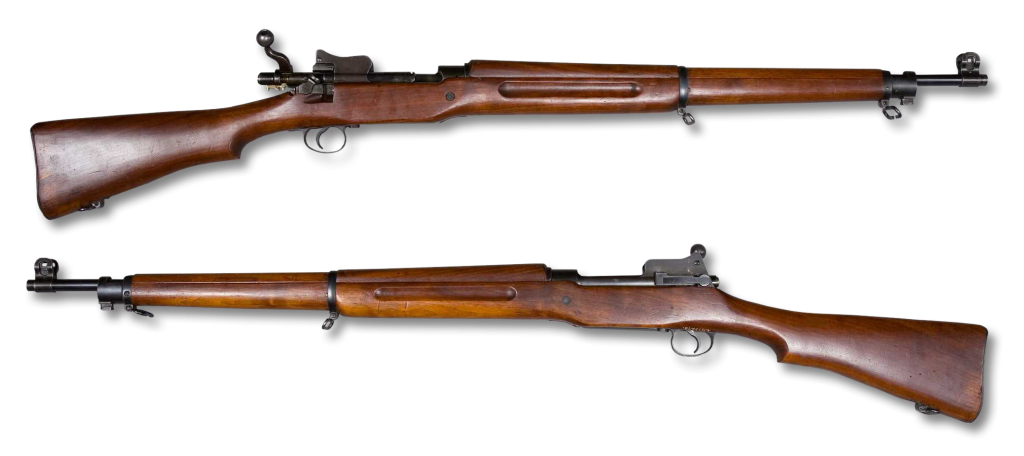
The Americans didn’t use the .303 cartridge but used the All-American, horse killing, shoulder thumping, freedom spreading .30-06. That was a slight modification they had to make, and they were up and running. Springfield produced the M1903 rifles, and everyone else began producing what became known as the U.S. Rifle Caliber. 30 Model of 1917, or M1917 for short.
They did eliminate the volley sights of the p14 and ensured it worked with U.S. made 5 round stripper clips. Slight modifications included lightening the weapon a bit, and the rifle used the sword-like M1917 bayonet. The M1917 armed about 75% of American Doughboys, including one Alvin York.
Sergeant York used the rifle when he earned the Medal of Honor after capturing 35 machine guns, killing 25 enemy soldiers, and capturing 132 prisoners. It worked well and was the rifle that won the war.
The Fighting Pistol
Whenever someone likes to throw in the two World War claim in regard to the M1911, I love to point to them the Colt and Smith models of the M1917 revolvers. Much like the Springfield M1903, the U.S. did not have enough M1911s to go to combat. The pistol was fairly new, and getting trained gunsmiths and the machinery up to make them wasn’t viable on such short notice.
Colt and S&W could produce revolvers, and that’s exactly what they did. The War Department wanted these revolvers to use .45 Colt to simplify logistics. Doughboys could keep the adopted ammo but on a different platform. This hadn’t been done before, and the lack of a pronounced rim proved to be a challenge. Daniel B. Wesson of S&W developed the half-moon clips to make ejection easy. They allowed Colt to use the half-moon clip design for free.
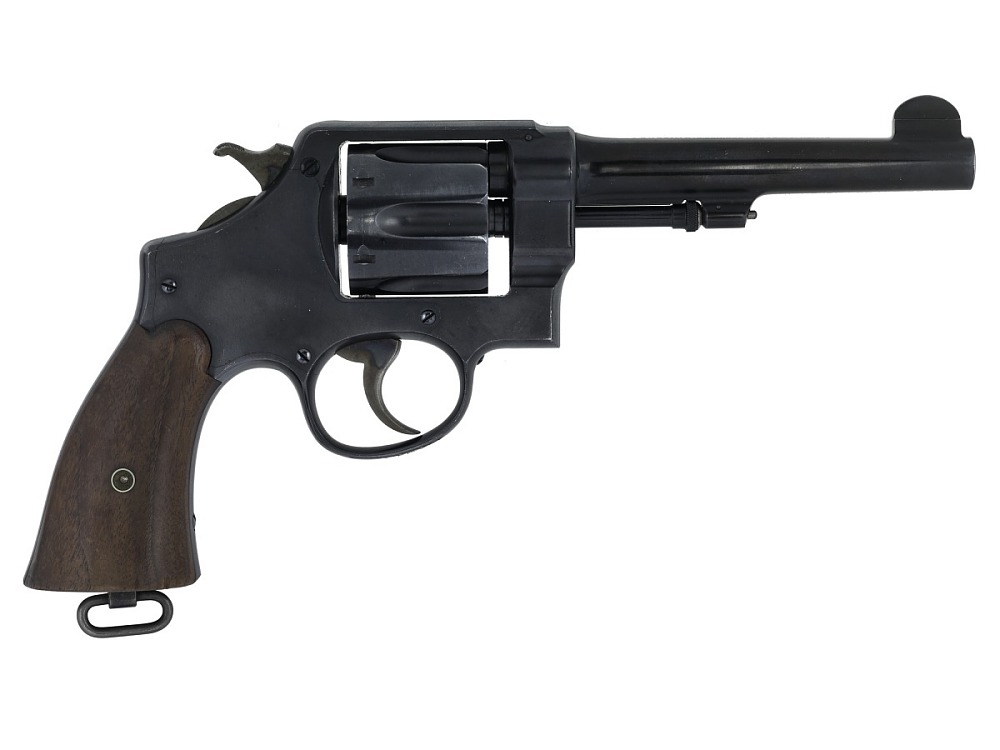
S&W took their famed Triple Lock revolver and converted it to .45 ACP. Colt went with the M1909 revolver originally chambered in .45 Colt and converted it to .45 ACP. S&W’s model had a rim machined into the cylinder that allowed the cartridge to headspace on the case mouth. The Colt M1907 required the half-moon clips to fire.
Two-thirds of doughboys who toted a pistol toted an M1907. The M1911 was a minority in the trenches. In fact, the M1907 also served in WW2 and in Vietnam with tunnel rats.
The Truth About World War 1
Our perceptions of the weapons used in World War 1 are often wrong. This comes down to nearly every weapon. Yep, the M1897 was used as a trench gun, but so were several other shotguns, including the better-designed Model 12. Two M1917 weapons won the war. Well, maybe not the war, but they armed the doughboys more often than our general perception.
This Dumb Gun the Stevens 9478
I have this weird compunction about dumb guns. I have to give them a home. Especially if they are cheap and seemingly safe to fire. That’s how I walked away with this oddball Stevens 9478. As you can guess, this is not a factory configuration. I stumbled across it at an auction, and no one wanted it…well, I mean, I did. One hundred fifty bucks later, it was mine and now has a great home amongst all my other dumb guns.
I have so many silly guns I might make this a monthly feature. But for now, let’s focus on the pirate gun, which is the affectionate nickname I’ve given to this very special Stevens 9478.
The Stevens 9478 – A Basic Blaster
The Stevens 9478 started life as one of the most basic shotguns out there. It’s a simple, hammer-fired, single-shot shotgun. It’s well suited for shotgun tasks, like trap, small and medium game hunting, and similar common tasks. The Stevens 9478 exemplifies a bare-bones shotgun, and it was made to be affordable. This variant is in 20 gauge, but Stevens made them in various calibers.
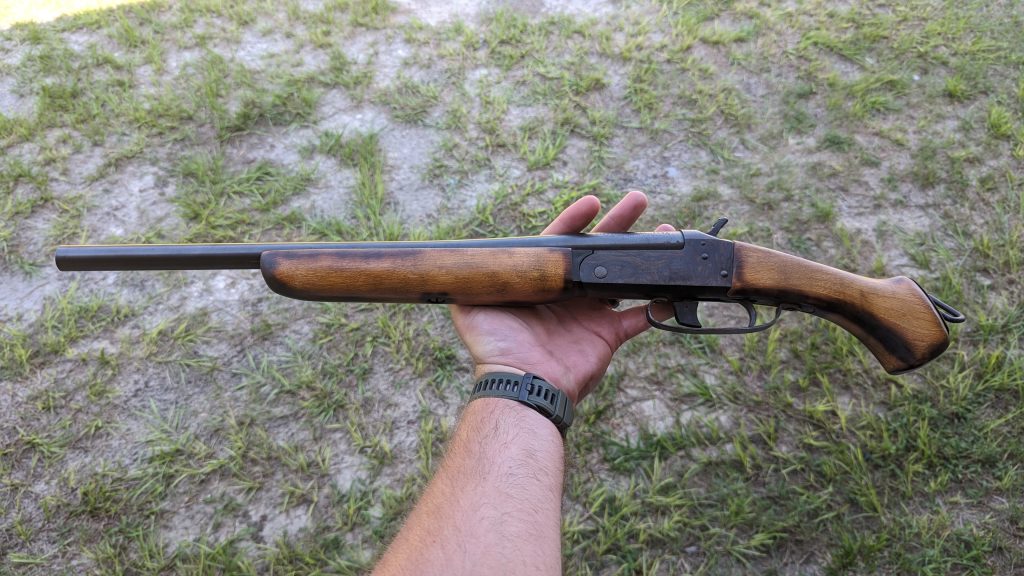
The Stevens 9478 shotgun is fairly unremarkable. To me, the best feature is the barrel release. It sits in front of the trigger guard and is really easy to access and open the gun. The quasi-case hardened finish isn’t exactly bad to look at, either. It’s plain but functional.
After an Appointment at Bubba’s Trailer
Bubba took the Stevens 9478 to the cleaners here. Honestly, he didn’t do a terrible job. The barrel has been chopped to 18.25 inches and looks fairly nice No burs or telltale signs of a crappy cut. It’s not perfect, but it works. There is no choke, and if Bubba threaded it for chokes, I’d be blown away.
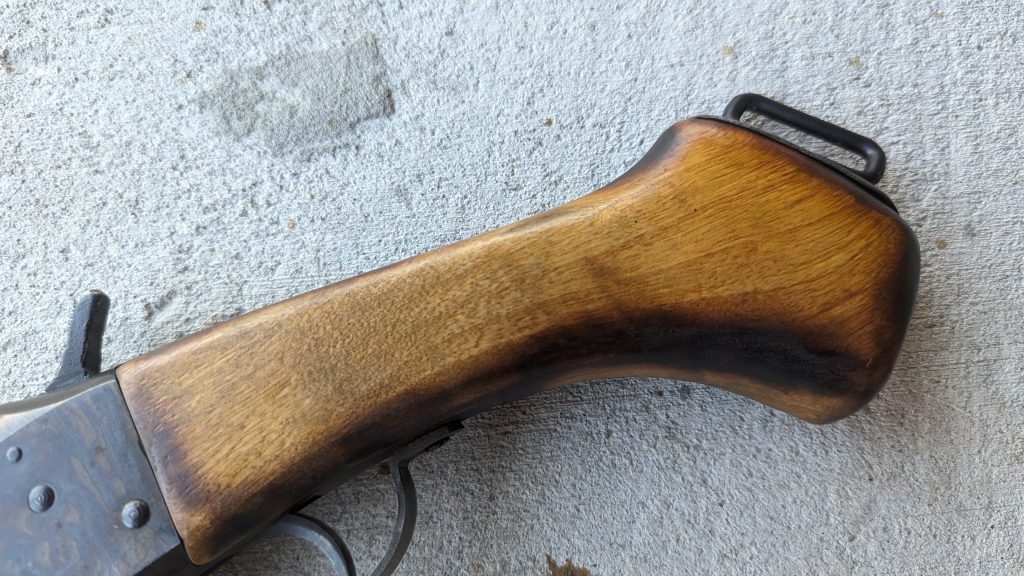
The stock has been chopped too. It’s a bird’s head-style pistol grip that’s all wood and reminiscent of the Shockwave grip. It’s fairly long and quite comfortable. I’ll give the guy credit. It’s a good chop that’s been finished over. The guy added a metal plate to the grip and tossed it on a sling swivel.
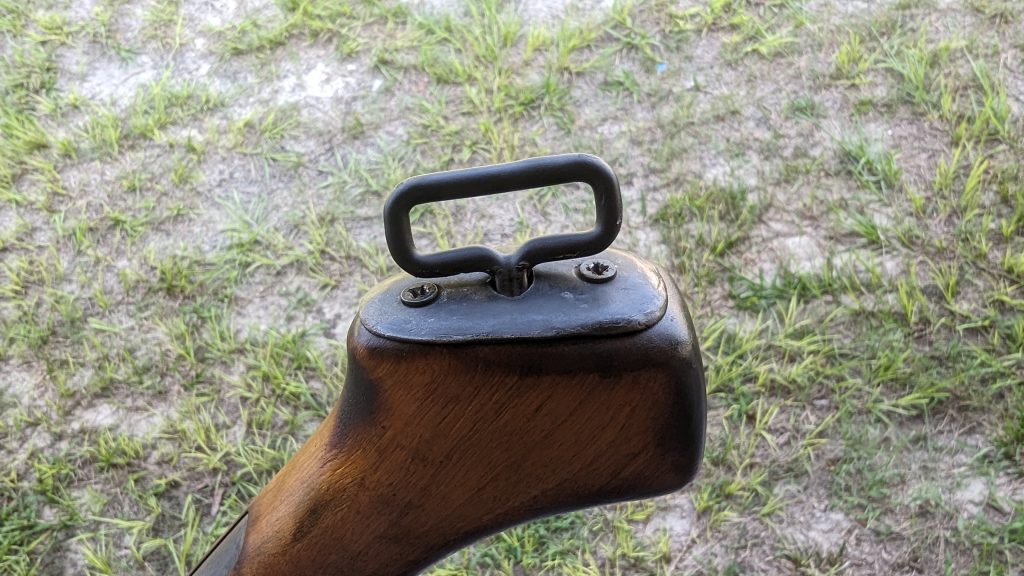
To top it all off, Bubba removed the factory trigger guard and put on some giant custom trigger guard on the gun that encapsulates not only the trigger but the barrel unlocking device. This makes it surprisingly easy to press inward and to open the action with a single hand. It’s wisely thought out and honestly impressive. It looks like he tried to add a bead to the barrel, but it’s since fallen off.
At the Range
The Bubba Blaster (which might replace the name Pirate Gun) is fun to shoot. A short little 20 gauge isn’t exactly tough to handle, and the recoil is fairly mild, depending on the load you utilize. Some full-powered buckshot loads might feel a bit much, but not by much. Birdshot is a ton of fun to shoot, and it can even be done with one hand. Turning clay pigeons into dust is a literal and figurative blast.
Aiming the gun down the barrel is pretty easy at close range, and the spread is quite wide. The lack of a choke and sawn-off barrel doesn’t exactly make it a tight patterning shotgun.
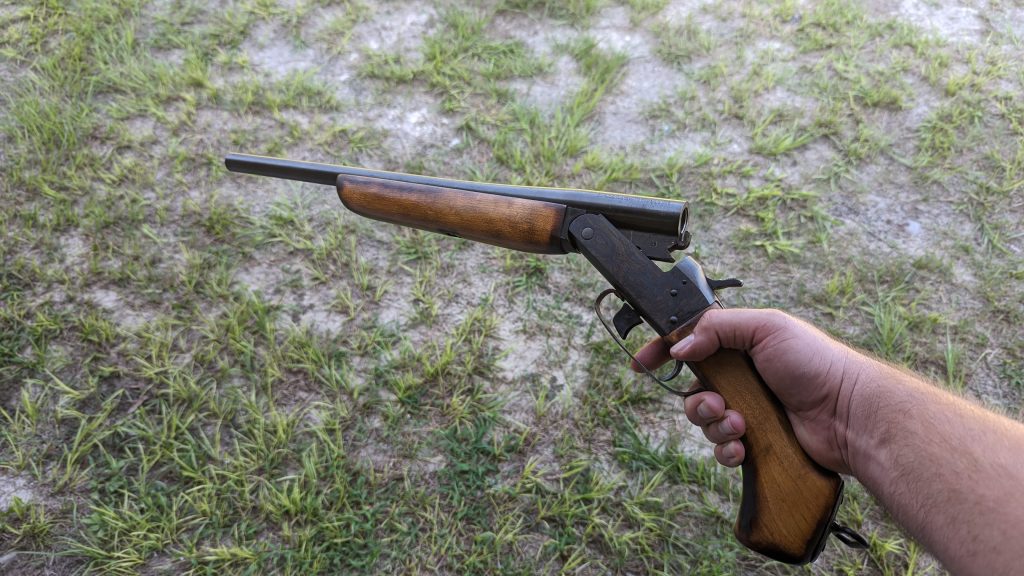
What’s the purpose? Well, it certainly has less purpose than it did in its original configuration. It’s short and light, which might make it great as a pest gun when riding an ATV. Other than that, it’s not particularly great for anything else. I could certainly remove most Florida predators with ease.
The Bubba Balster (name officially changed) is a fun gun that’s largely useless. That’s okay. It joins a veritable army of useless and dumb firearms that sit in my gun safe. Watch this space for more of Bubba’s hot takes, weird guns, and other obscure weirdos that occupy my interest.
Knife Maintenance
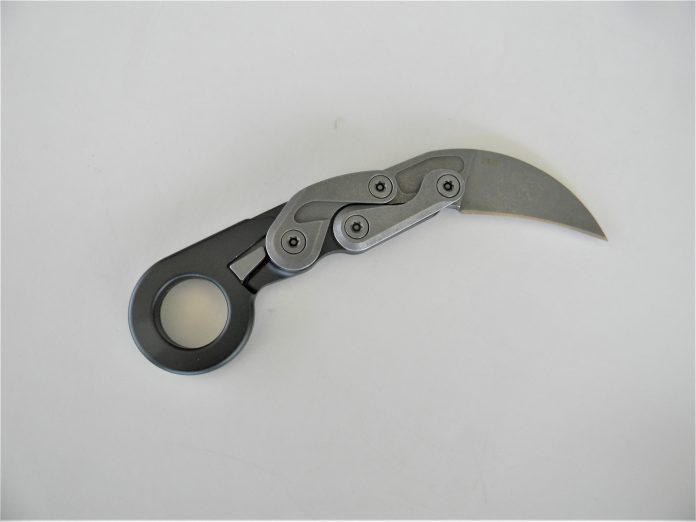
A knife is our oldest tool. A fixed blade knife is most rugged, and when we pick a knife for rugged chores such as camping, cutting food, and opening packages a fixed blade is best. Introducing a mechanism into the edge tool makes things complicated. A spring was used in some folding knives. All folding knives have some type of bearing surface. A back lock, mid lock, liner lock or other type of lock is used. Knives are assembled with rivets screws and dovetailed fit. Modern knives are designed for easy maintenance, disassembly, and tightening when needed. If cared for they will last generations. That is the key. Lets look at some of the best ways to maintain the edged tool.
A failure would be a serious calamity when you really need a knife far from home. A flea market knife used for opening boxes and cutting tape is easily discarded and replaced. I engage in periodic maintenance of all my better class of knives. If a blade edge is neglected it is difficult to restore. Once corrosion sets in a blade may pit. Stainless is just that stain-less not stain proof. Keep the edge clean and wipe away bits of material from cutting chores. Keep a light coat of oil on the knife during storage. Tighten the folder’s handles or scales and keep the pivot points lubricated. But don’t lubricate the lock!

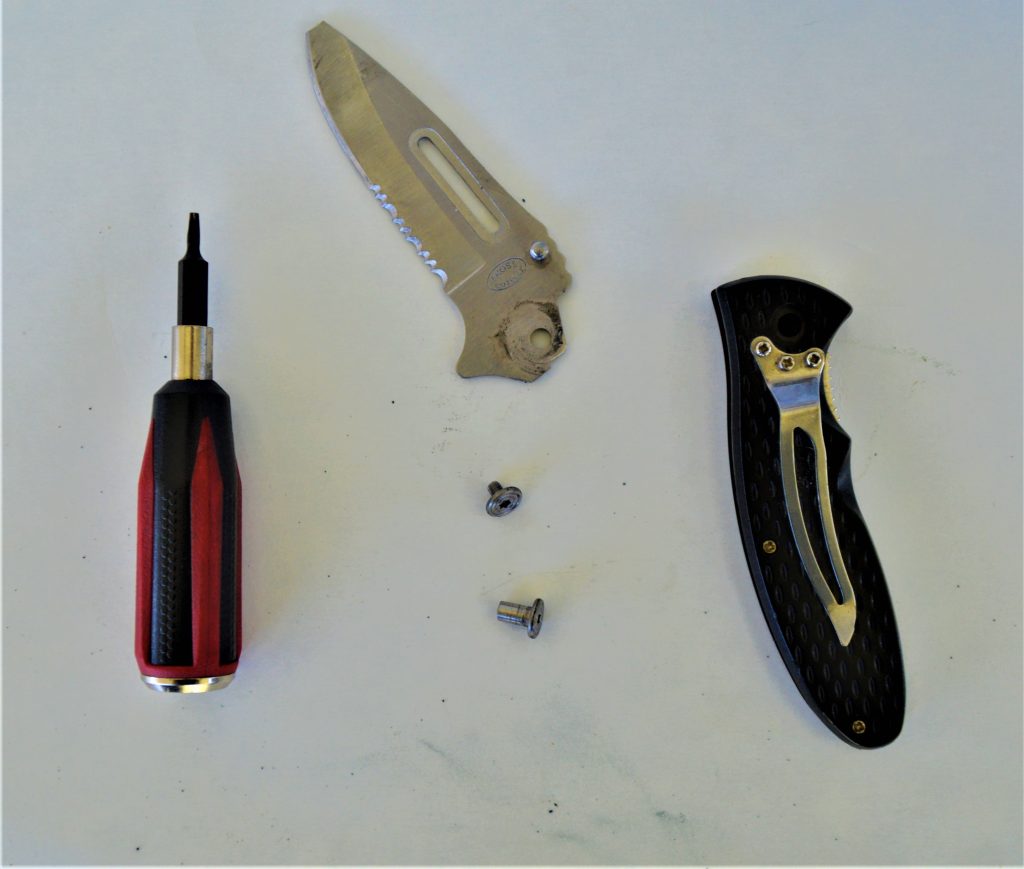

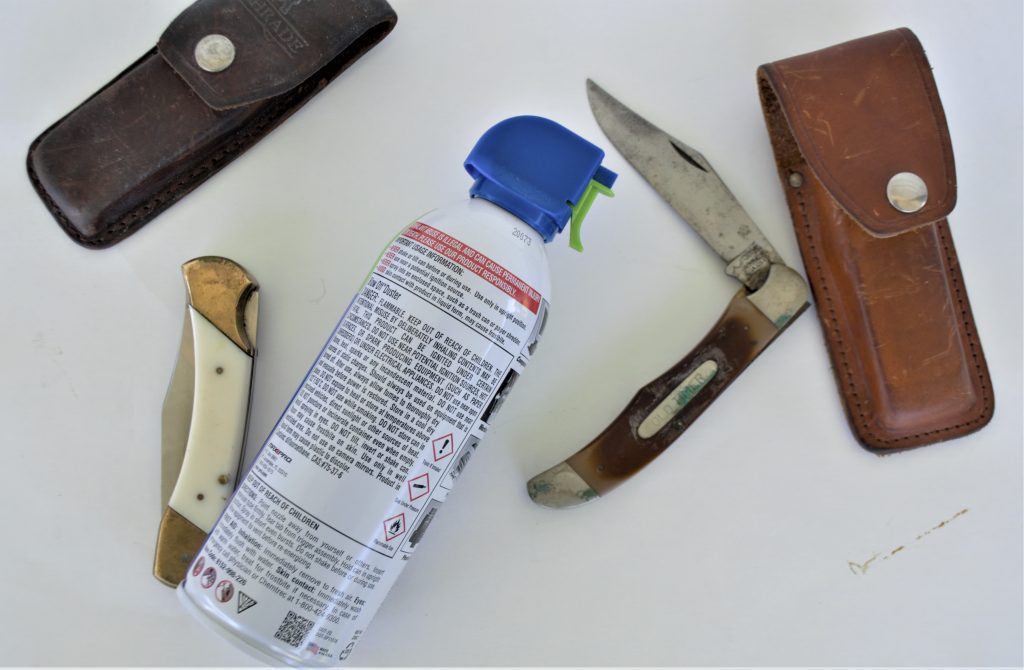
There are many methods and tools for sharpening. I use the Work Sharp guided field sharpener. As a result my sharpening skills are much better. While my uncle Heyward was a master of the stone I am not. My knives are just as sharp as his. A caution- you would never wax your vehicle without first cleaning. By the same token never sharpen a blade without first carefully cleaning. Otherwise you are simply rubbing material into the blade and perhaps gouging the steel. Sharpening restores a dull or even damaged edge. Knives make poor crowbars. A broken point may be reshaped but best not to break it in the first place. Sharpening removes a bit of metal from the blade producing a bevel. The Work Sharp sharpening tool offers a 20 degree sharpening surface and a 25 degree honing surface. Manual sharpening should be a few steps removed from the stone but I seldom use an electric sharpener. You may be surprised how seldom a knife needs sharpening. A home steak knife or kitchen tool may be sharpened perhaps twice a year, a camp knife after a camping trip and some use. Honing is maintaining the edge and is a less difficult process used more often. I would not like to count the times some of my camp knives have been sharpened. They are still useful but blade geometry eventually changes. When a blade has been neglected clean first then begin sharpening with the coarsest surface and proceed to the finest surface. The Work Sharp device features a fine and coarse diamond plate, ceramic rod and a leather strop. This will fit all types of sharpening styles. More injuries are the result of a dull knife stubbing and stopping short causing the hand to run forward on the blade than are caused by a sharp knife!
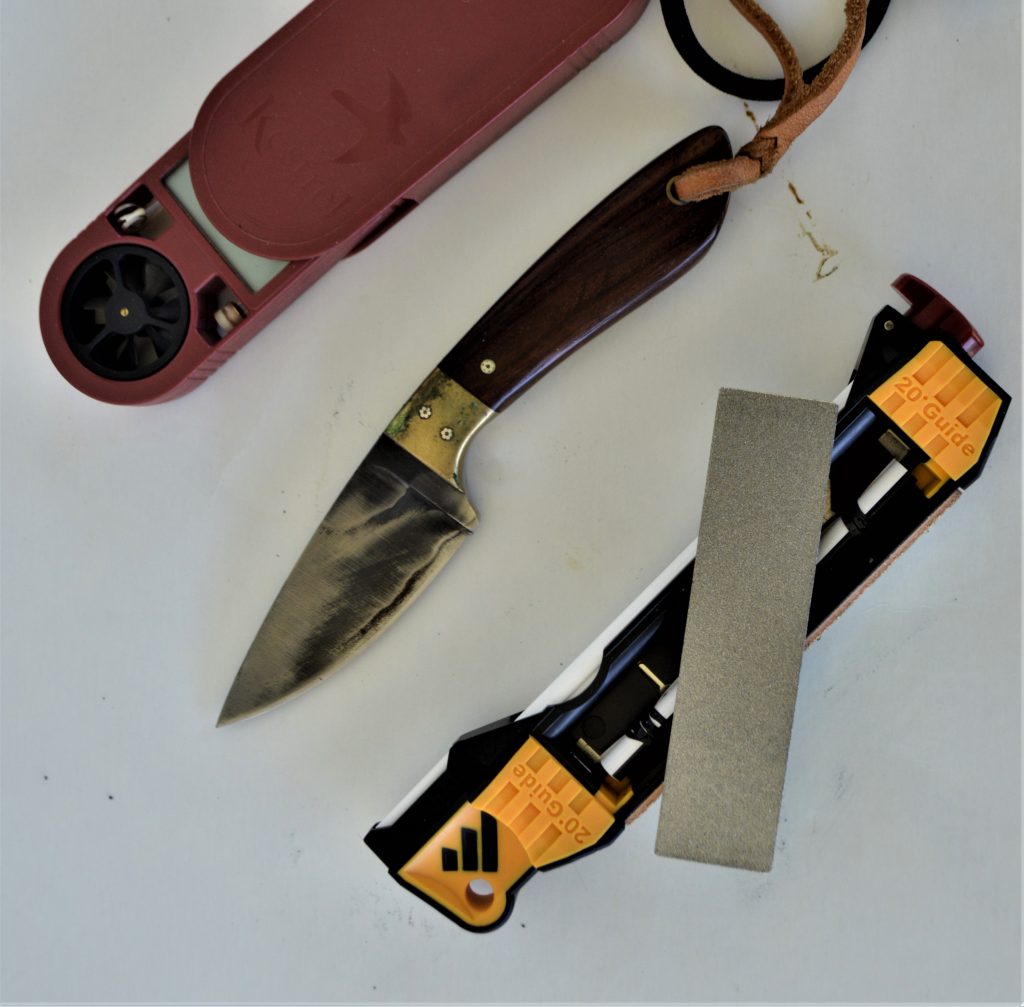

In survival gear I have no room for nostalgia deploying the most modern proven gear. Just the same a hobby is collecting used quality folders from flea markets and yard sales. Some such as the Solingen folder were good finds. Be wary, however, as there are Pakistani and Chinese copies that look real but the metal quality isn’t good. It isn’t a pursuit I recommend unless you have good steel to rely on and use the chaff for a hobby. That said I have learned a great deal about knife maintenance cleaning and restoration. Folding knives much be serviced occasionally whether you use them or not. This means the pocket folder you rely for defense or emergency must be cleaned. Debris in the mechanism could impede folding. It is possible a tangle of thread could prevent the knife from opening. This is why I recommend a robust design such as the CRKT M16 as a folder. As a camp knife a fixed blade is the best choice. As I was writing I opened my CRKT M16 and checked the un-sharpened blade surface. Sure enough there was plenty of grainy grit present.

The folding knife much open close and lock correctly. A simple wipe down occasionally is recommended. Some use gun cleaner of the penetrating aerosol type, a friend uses a computer air duster. At some point you may need to partially disassemble the knife. Most knives have hex screws that allow disassembly. Search for grit and debris that may affect function. Since the lock works by friction don’t lubricated the lock mating surfaces. Pivot pins should be lubricated. Detritus affects function. Usually the scales don’t pick up much debris but it is a good idea to wipe them down and remove accumulated dust. This is all that is needed in the normal course of use. Depending on how much you use the knife torx screws eventually work loose. These should be tightened. I check my primary carry knives every month or so. Most of these knives use Torx screws either #6 or #8 so tools are not difficult to locate. This is simple enough hardware store gear. Take care of the edged tool and our oldest tool will serve well with little attention.
The Vermont Fish Hunt Season
I’ve hunted, I’ve fished, but I’ve never combined the two. I vaguely remember the sport of shooting fish with bows becoming somewhat popular in the late 1990s, but even that has trickled out. Yet, I recently discovered that the Great State of Vermont had had a hunting fish season for just about forever. From March 25th to May 25th, it’s open season in Vermont for fishermen to grab their mohaska and hit the rivers armed and ready to fish hunt.
Hunting fish with firearms is as odd as it sounds. The rules are pretty slack in some regards. There is no minimum caliber or weapon type. You can use a handgun, shotgun, or rifle. You can use rimfire, FMJs, or hollow points. On the flip side, they are fairly strict with the fish your can shoot. The season allows the Vermonters to hunt the following fish, pike, pickerel, carp, suckers, mullet, bowfin, shad, and carp.
The typical game conservation rules come into effect. You can only bag five fish, and they must be at least 20 inches long. You best be good at estimation before you pull the trigger on that ugly carp staring at you.
Tactics of the Fish Hunt
The tactics of the fish hunt are surprisingly interesting. To me, I just figured you shot a fish, but it turns out that’s for amateurs. If you shoot a fish, it just kind of explodes. This might be caliber dependent, and while rimfire is allowed, I doubt it does a great job of penetrating water deep enough to hit a fish. It turns out the tactic is to shoot right in front of the fish. This creates a concussion effect that kills the fish and allows it to float to the top.
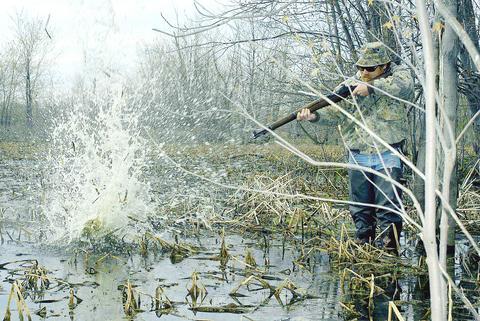
This hunting coincides with the mating season, which brings fish to shallow waters to breed. A tactic used by many fish hunters on the great Vermont fish hunt is to use a fairly high-powered weapon to shoot near a female fish. Optimistically this results in the death of the female fish and a male or two looking to breed.
During the fish hunt months, these magnum-powered anglers will climb into trees overlooking the water, forming a sort of fish blind. Others will ride shotgun in a boat, literally, and some just walk the shores looking for potential prey. Anything close to the water seems to be the better hunting area. This combination of fishing and hunting seems to blend the tactics of both.

The On The Ground Reality
The fish hunt is not popular with regulators. In fact, in 1969, Vermont banned it. However, this upset so many in the state the next year they don’t not only reinstated the season but expanded it to include more fish. Opponents of the fish hunt often cite numerous reasons why it’s a bad idea, including:
Bullet Ricochets Off The Water
Overkilling of Fish Due to Concussion
Disrupting Spring Marsh Ecosystem
Interruption of numerous bird species during nesting season
It’s remained controversial, but it’s not that popular. The culture amongst Vermont outdoorsmen seems to largely ignore the sport. Many may try it once or twice, but it’s not a common thing by any means. In fact, it’s likely to die out if left alone. What seems to occur is that some rumble of prohibition will rear its head, and boom, it’s got all this attention once again with a vocal group of people defending it.

Once it becomes news, we see more people trying it and the sport growing for at least a season. If Vermont really wanted the fish hunt gone, its best bet would be to just shut up about it and let people forget on their own.
The Vermont Fish Hunt is certainly an interesting season. It further establishes that Vermont just might be the bizarro, snow-covered version of Florida.
Did we really pass 400 mass shooting in July?
CNN and several others are carrying the the story that the United States has breached a crucial and terrifying milestone early this year, 400 ‘mass shootings‘ in only 203 days.
Is that bad?
It sounds bad.
That’s bad, right?
Yes, it is. But like most headlines, it doesn’t communicate much (any) nuance. It just bludgeons you in the face with the item the writer wants you to ruminate on and none of the surrounding data, especially contextual data. We’re not that far ahead from the three prior years at this point in time, and 2020’s violence ramped up late compared to the violent curves we saw in 2021 and 2022. 2020 was a notable anomaly while 21 and 22 followed 20’s ‘new normal’ numbers in a less compressed way.
Context
If we look at trends and compare them to recent years we see that 2023 is continuing the “new normal” summer violence curve volume set by the lockdown and the riots. People continue to be discontent and certain segments of the population for various reasons are expressing that very violently. However if we look at more data from more than just the wildly overbroad definition of ‘mass shooting’ we do see some signs of progress back.
Will we likely still have a 600+ mass shooting year? Probably. Could we crest 2021’s peak of 690? Maybe, but we also might trend out in the fall.
But if we look at localized barometers, like Chicago, we see more promise than the doom of the headlines suggests.

2023 is looking slightly but notably better than the previous three years with homicides in July, a bad month historically, down by 5% from 2022 and drifting closer to the average of 360. July is only projected to be roughly 7.5% over average where it was 32.7% above in 2021.
This, baring another negative global scale impact on good order (like shutting down massive portions of the legitimate economy and rage baiting social pain points), hopefully signals a continued cooling off that those tensions. Other cities and states are reporting better than last year violent crime numbers while certain segments are still seeing spikes.
Realities Collide
The question is: Does the number of ‘mass shootings’ going up matter if injuries and homicides are coming back down?
Yes, but not from the banner waving gun control idiots. It matters in how we see and track both triggering pressure break and retaliatory action. The various socio-economic segments have wildly variable trigger points that do result in a similar retaliation, violence.
We are seeing several rather painful realities clashing in 2023 and if you compare things like violent criminal events against economics and socio-political diatribes, we see patterns emerge. In a macabre way it’s like weather prediction, you can see the pre-violence indicators flare up but that doesn’t give you the tools to fix the conditions or influence them in a timely manner. It doesn’t even predict an actual event, just the conditions that might trigger one.
We have any number of social pressure points that are creating hot spots in todays climate. It is overwhelmingly socially triggered large scale violence we are talking about. Whether criminal retribution, insult retribution, family stress, or radicalized retributive violence, it is overwhelmingly a social event and not a monetary one.
‘Mass shootings’ spiked 46.2% in 2020, and reaching 400 events in 239 days instead of barely passing 400 on the 356 day mark in 2019. 2019 was also the worst year of the previous 4, with 2016, 2017, and 2018 under 400 incidents. Both 2017 and 2018 didn’t reach 350 incidents. 2018’s 336 incidents to 2021’s 690 represented a 105% swing upwards in just three years.
We are, if indicators remain as they are, looking at a small decrease in overall deaths for the year over year. What we are fighting this year more than the previous two is people are back outside in spades and the ones that have been pissed off over X, Y, or Z motive are mobile with the rest while the world at large is chilling a little bit.
Pressures and tolerances are also continuing to shift, new hot spots are forming as old ones cool which may offset the tempers that are cooling. The burn out from previous years is fighting the heightened mobility of people and grudges are still being settled as new ones are formed. Example: The drive-by shooting is at an all time favorite position, in recent memory, as a method for dealing with problem individuals or groups for [insert reason]. Many of the ‘mass shootings’ listed in the elevated total are drive by attacks for criminal or social retaliation.
Mass murders look to be tracking the same, or unfortunately higher in occurrences than last year, but with only one incident so far in excess of 10 dead (11) in California and only 4 incidents with 10 or more dead and injured combined, casualties may end up tracking in the same direction as mass shootings with a lower number and some progress made back towards the 2010’s rates.
The long way home
But the reality is… we are in a new normal, we are hotter tempered and shorter fused with a dimmer outlook than ten years ago. It is a time of many discontent points and those are going to take some big socio-economic wins and realityto settle into the collective consciousness to offset and cool peoples’ heels. The points of contention are hot, misunderstanding the other side is leveraged for political capitol, and in many instances the people in charge are so catastrophically ignorant or couldn’t care less as long as their pet project gets its paycheck.
Law enforcement is a down profession right now and civility towards one another is treated as a polite joke many instances with the giving or taking of offense. Behaviors are excused or comically over reviled, punishments vary wildly, speed and consistency in justice is seen as absent, plenty of stupid events are still crimes that arguably should not be. None of these circumstances or prevailing attitudes supports the general welfare of the nation. The millennial adult outlook is a bleak one.
Leaders are not inspiring confidence, they are seen either as grifters or incompetent. They aren’t taking the public attitudes and concerns and then finding responsible solutions in logical policy, they are using the shortcuts that sound best to the vague opinions from the public that will earn them their sweet sweet electability points for the next popularity contest we call elections.
The whole of the 20’s is likely to be a rough one, but the later half may bring us back to some 2010’s levels if we can tame back our wilder societal impulses of incivility, campy rhetoric, and overly inflammatory hyperbole because it fits our pet narrative about the more complex realities.
The year marches onward.
The Garden Gun – A Forgotten Firearm Genre
What do you think when you hear the term garden gun? Probably not much, as they’ve been out of style for quite some time. In fact, they were never that in style in the United States. Garden Gun is one of those forgotten genres of firearms that sorted of faded away with European firearms culture. Their name comes from the British term for a yard as a garden and is typically designed to be useful home guns that would cause a ton of noise pollution or scare the neighbors.

Garden guns are not home defense firearms unless your home is being attacked by small pests. Garden guns were designed to provide immediate pest control to homeowners. While garden and yard are synonymous in many places now, they would not have been uncommon in an actual garden and still wouldn’t be today. While seeing a mouse amongst your flowers can be a fright, seeing mice chew through your vegetables is heartbreaking.
What’s a Garden Gun
Garden guns are smoothbore guns, and they have all the features to make them shotguns. In fact, some of the larger garden guns used the classic .410-bore shotgun shell. .410 is huge for a garden gun. With that in mind, the .410 loads used for garden guns were not as powerful or as densely loaded as modern .410. Calibers like 9mm Flobert were much more common. Cartridges as small as .22LR were used, but not as rifle projectiles. These .22LR garden guns would fire small bits of shot, often known as rat shot.
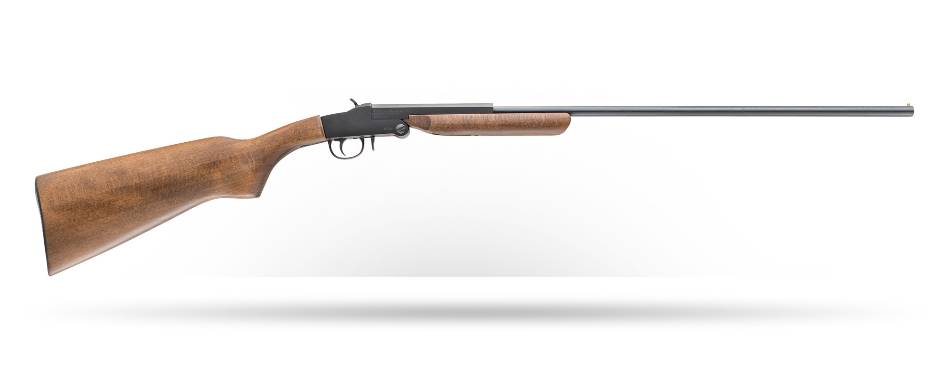
It bears mentioning you can shoot rat shot through rifled barrels, but it works much better through a smoothbore and has a longer effective range. That’s not saying much because garden guns aren’t really effective for anything beyond 15 yards or so. As far as guns go, they were fairly safe for suburban areas.
How They Work
Interestingly enough, garden guns rarely face the same kind of strict regulation other firearms do around the world. They are typically single-shot weapons and are too underpowered to work with semi-auto actions, and their limited effective range makes them much more of a tool than a weapon. That being said, a gun is a gun, and I’m not endorsing anything but strict safety standards.
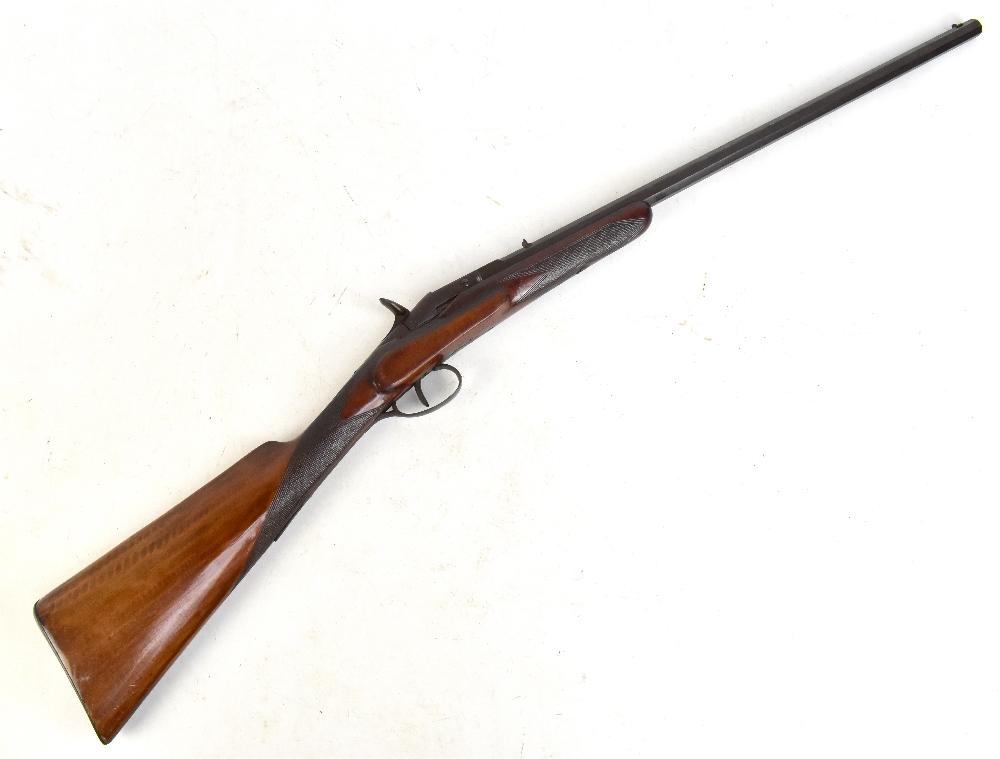
The use of shot makes hitting small, often moving targets easy. At the same time, recoil was nil, so the little old lady who grows the world’s best tomatoes can easily handle a garden gun. Plus, most of these guns are fairly quiet. In my experience, .22LR Ratshot is hearing-safe. Although as always, take care to use proper PPE when discharging a firearm.
Outside of the garden, these guns were also used in barns and even under houses for pest removal. They were very low-powered and didn’t risk damaging the insides or underside of either. As a kid, I spent a lot of time killing rats in the family barn and in friend’s barns with a .22LR rifle loaded with rat shot. It was a ton of fun and a faithful rat terrier, and I killed dozens over the summer.
The End Of The Line
Garden guns have mostly fallen out of favor. We do have much easier ways to keep pests out. Farmers in rural areas typically just use whatever they have handy gun-wise. A standard 22LR with rat shot still works pretty dang well.
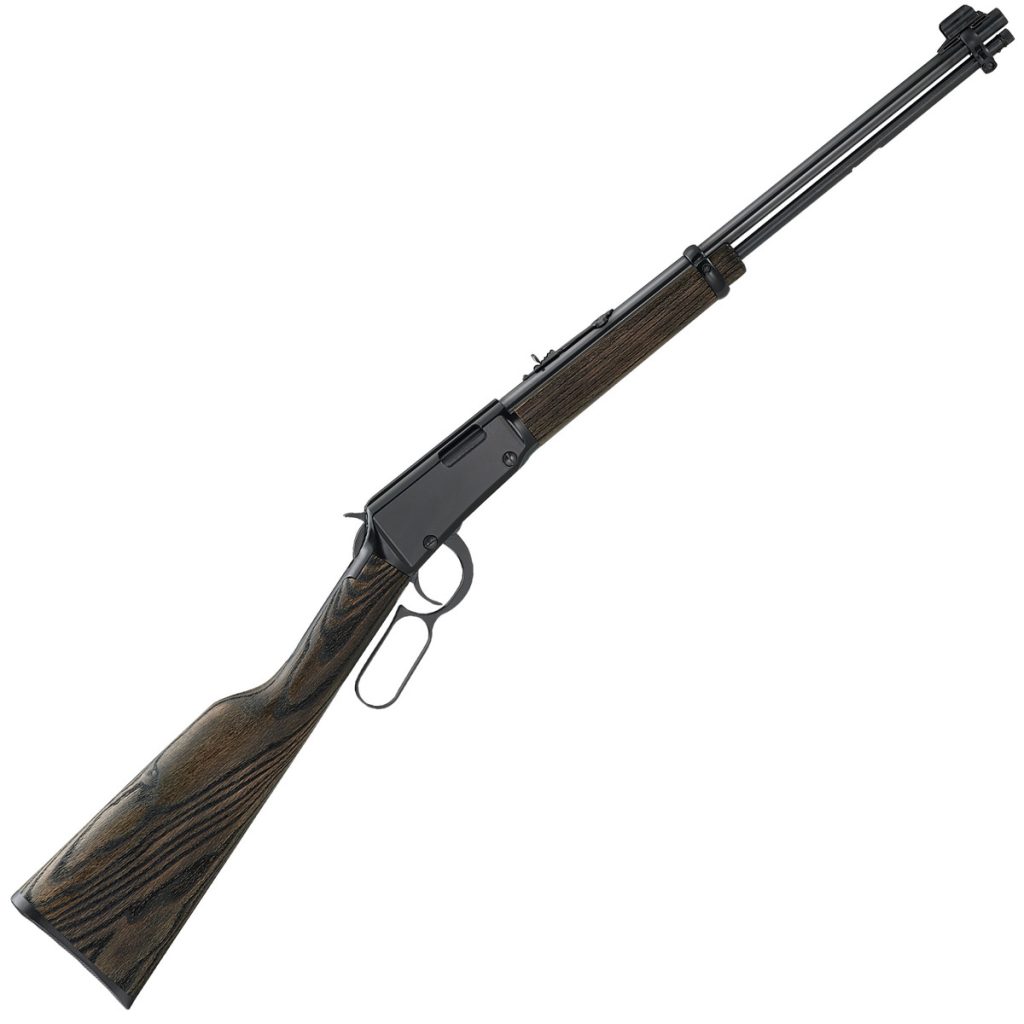
Although they are not completely gone. Henry made a dedicated, smoothbore .22LR garden gun some years back. It’s certainly an expensive option for a niche gun. Chiappa, at one point, included ammo with the gun since it’s not exactly common these days. The Garden gun isn’t totally dead, but it certainly isn’t a popular option these days.
It’s a unique and, at one time, very useful tool in a slightly uncommon role. The idea of my own grandmother tooling around blasting rodents in her garden with a 9mm Flobert brought a smile to my face.
Gold: Inflation-Beater?
When looking for ways to safely and wisely invest your money, there are often two main suggestions: Real estate and the stock market. Real estate has the benefit of intrinsic physical value, as you can actually live, work, or at least store things inside it. You can also rent it out, and collect regular income, or wait for it to appreciate and sell for a profit. The stock market has a lower financial barrier to entry but can be a lot more complicated. Additionally, if you think real estate is a volatile and unpredictable market, stocks are subject to even more influences, and can shift with the wind in ways that make house prices look stable.
What about an option that not only has increased in value steadily since the mid-20th century, is easy to invest in, has a low financial barrier to entry, and doesn’t require a business degree to grasp? Gold –and other precious metals– remains an understood and broadly accepted currency across the world, as it has been for centuries. It has both fiat –in its historical role as a government endorsed currency– and practical –industrial and manufacturing applications– value giving it positive aspects of both money and durable goods.
Gold and other precious metals fluctuate in value of course, as anything does, but gold especially doesn’t follow the same patterns as the stock market. When stocks are down, gold’s physical and monetary value drives investment, which raises its price. During the recent social and political upheavals, gold stood strong while stocks and stock-based investment portfolios took a massive hit. During the first few months of the American pandemic response, the S&P 500 took a 23% nosedive, while gold saw a mere 0.1% dip. Gold prices historically fail to move with other investments, making it a reliably stabilizing factor in your financial future. It even beats Bitcoin as a bulwark against inflation according to Forbes
Do you want to get started investing in gold or other precious metals, either as your primary hedge against future financial volatility or the potential for societal disruption, as a way to control for rising interest rates and home prices, or falling stocks? One of the easiest ways to dip your toe into the water is an expert-curated, highly rated subscription service like Bullion Box. You can get into a monthly gold and other precious metal monthly subscription service at prices that fit most budgets.
If you’re simply curious, or don’t have a lot of disposable income, you can get started for only $59/mo with silver bars and rounds up to 1oz. Expanded monthly plans can be had from $125/mo for even more, rarer silver, or as much as $250-$500/mo for gold, platinum, and even rare collector’s pieces. Whatever your price range, there’s something available. Even if you’re not ready to jump into investing, check out their website for more information about precious metals, their value, and why it might be a good place to put your money in uncertain times.
The SOCP Fixed Blade – A Modern Dagger
I really love knives, but I don’t consider myself a knife guy. Knife guys are often weird, and while I’m weird, it’s not for knives. Most of my knife interest relates to historical fighting knives around the mid-1800s up until World War 2. This was a time when fighting knives were used fairly often, not commonly, but the melee struggle was certainly more likely. As a fan of these traditional fighting knives, I was drawn to the SOCP designs, which to me, represented the modern fighting knife.
The original SOCP was a small dagger designed for immediate defense in close quarters. It seemed to be the perfect modern defensive fighting knife for soldiers and Marines. Since then, the SOCP line has continued, and it’s expanded into today’s subject, the SOCP Fixed Blade. This is no micro-sized dagger but a full-on fighting knife. Before we go too deep, it might be smart to explain what SOCP means.
The SOCP Idea
SOCP is a martial arts system designed specifically for special operations personnel. The idea is to build a modern martial arts system that works around being in full kit and even being able to use that kit in the fight. It’s an acronym and stands for Special Operations Combatives Program.
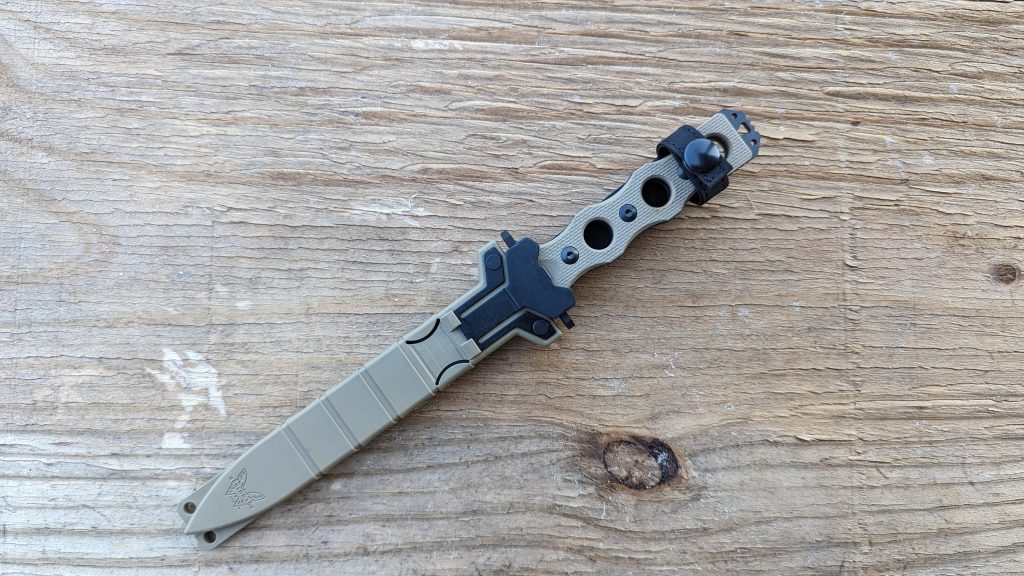
It’s been adopted and taught to all special Forces groups, as well as the Rangers, MARSOC, PJs, and many more. It was created by martial artist Greg Thompson after 9/11. Greg is a highly accredited martial artist with an extensive background in various belts and championships. He’s also the designer of the SOCP daggers, including the SOCP Fixed Blade.
Enter the SOCP Fixed Blade
What drew me, as a historical knife nerd, to the fixed blade SOCP is the overall design. To me, it harkens back to the daggers of World War 2 and the Interwar period. In many ways, it reminds me of the Syke Fairbairn dagger, which was quite popular amongst commandos in World War 2 and influenced the Marine Raider Stiletto. It even gives off those EK Model 4 and Gerber Mk2 vibes. The historical fighting knife it mainly resembles is the M3 trench knife.
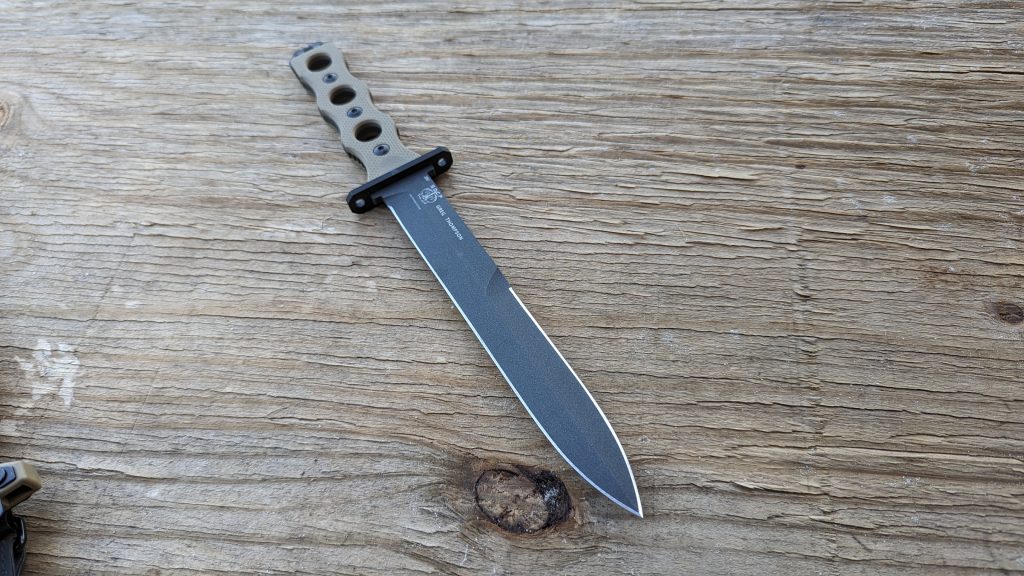
A dagger design that’s thin and lithe with a long blade meant to reach those valuable internal organs. The idea certainly hasn’t changed, but the implementation has. The SOCP Fixe Balde uses a rugged straight dagger design with just a slight gradual thinning to the blade. More traditional stilettos used a gradually sloping design towards the tip.
The SOCP Dagger’s straight design keeps the knife smaller and lighter while using modern steel to ensure its rugged design. Gone is a washer or leather-wrapped grip. In its place are G10 grip scales over a full tang, one-piece knife blade. The scales are heavily textured, as is the grip they cover. It’s quite modern all the way around but still uses what’s been proven to work over and over.
The included sheath is made from polymer and features a variety of mounting options. It can be lashed down, worn on the belt, flak, or whatever else you need to toss it on. The sheath even offers an active retention device that’s modern and easy to defeat with a single hand.
A Pure Fighting Knife
This is not a bushcraft or survival knife. It’s not even a KA-BAR designed to be both utilitarian and provide a decent fighting knife. It’s designed for modern fighting forces and for fighting, so there are sacrifices and design details we wouldn’t see on more utilitarian knives.
The grip is easy to criticize if you want something comfortable for long days accomplishing bushcraft tasks. The handle is rather thin and aggressively textured. It’s not comfy for working tasks. While it can accomplish some, it’s really for stabbing bad guys as they try to take your rifle. The grip reflects that.
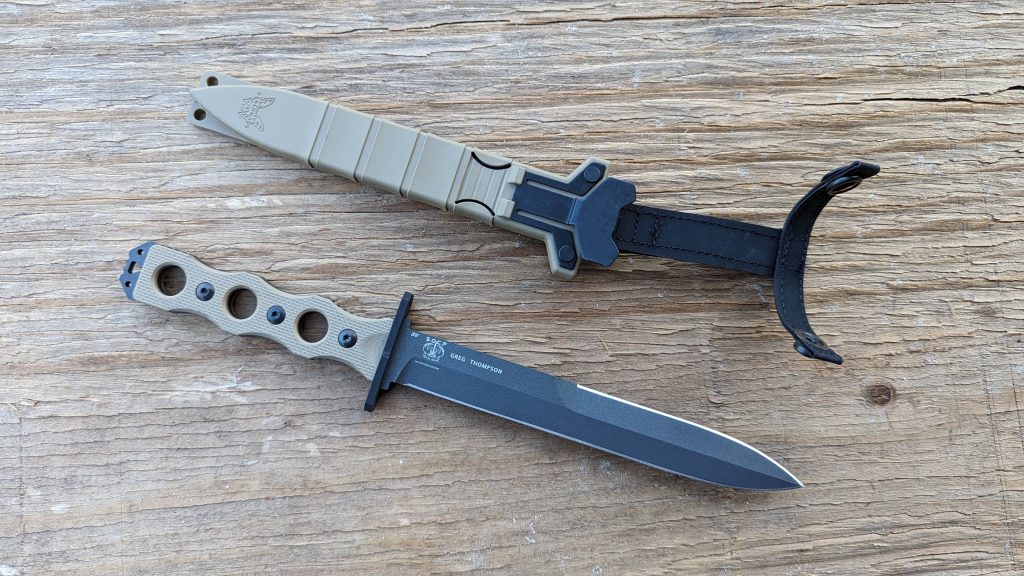
The SOCP fixed blade is a dagger design and offers one full edge and one-half edge. At the rear of the half-edge, you have a thinner portion of the blade that likely adds another place to press in a close quarter’s fight. It really resembles the M3 in this regard. The blade is a hair over seven inches long.
The blade is made from CPM-3V, which is a tool steel. It’s rugged and very durable and is mainly known for its impact resistance. That seems critical if you’re tangling with an enemy soldier who might be wearing body armor and other hard surfaces the knife can contact. It won’t chip when it bounces off a bone.
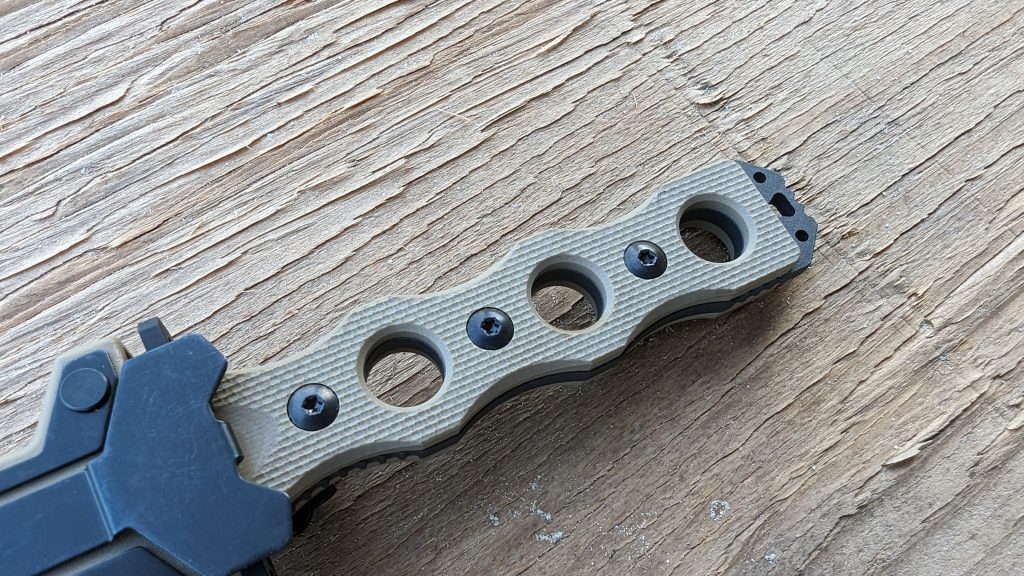
No Expert Knife Fighter
I’m no knife expert, but I was an infantryman, so its light and thin design is appreciated. At 5.78 ounces, it won’t add much weight to your loadout. The thin nature of the knife means it won’t take up much room on your gear, and you’ll have plenty of room for everything else.
I think the term knife fighting often fills people with visions of action movie-fueled fantasy fights. Two guys square off and take swipes at each other until the hero wins. That’s not what I think really happens. This type of knife is an emergency tool for when a soldier or Marine gets into a melee. If some guy being searched at a checkpoint tries to grab your rifle, you use one hand to hold the gun and another to pull the knife and poke the guy until he lets your rifle go.
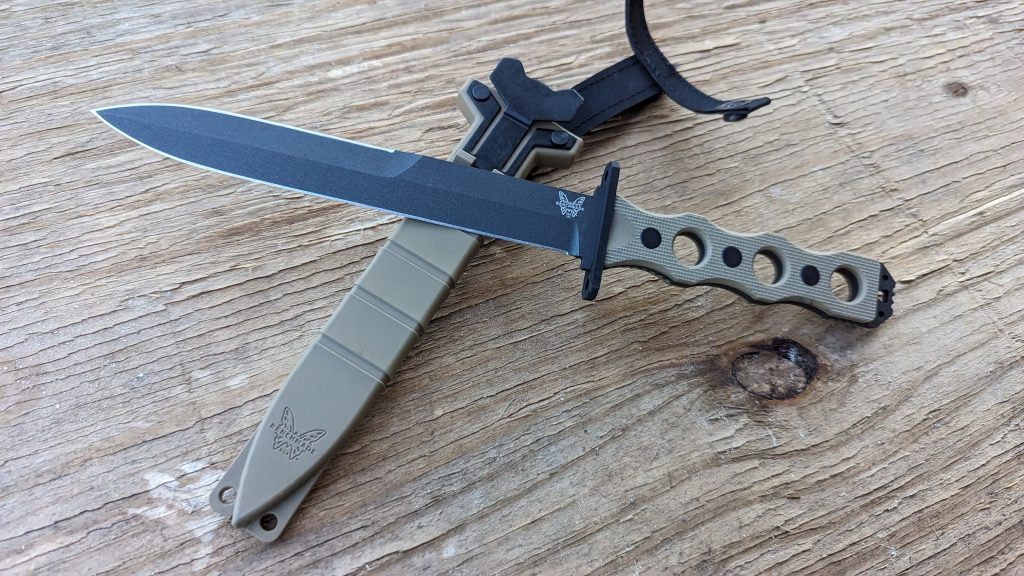
That’s what I imagine a knife fight looks like, a close-range, melee struggle where a gun isn’t immediately accessible. You use the knife until there is enough room to shoot them. In this situation, the SOCP Fixed blade offers a tough knife with a long blade that increases your reach and likelihood of hitting something important.
That’s where the SOCP Fixed blade shines.
Training With Bill Blowers
This past May, I took a weekend carbine class hosted by Templar Defense and taught by Bill Blowers. The venue was one stormy-ass shooting range in southeastern Texas. This was actually my first ever carbine class and my first time meeting and training with Bill. If you haven’t heard of Bill, you’ve probably seen his NRA B8 Targets pasted all over the Internet. Every target bears the name of his training company, Tap Rack Tactical. B8s make great targets for many reasons, and not surprisingly, that’s what we shot at the entire class. The 5.5 inch bull not only represents a good sized natural targeting area, but the rings are easy to score too. And that’s another thing, Bill makes you keep track of times and scores when shooting the various drills and tests.
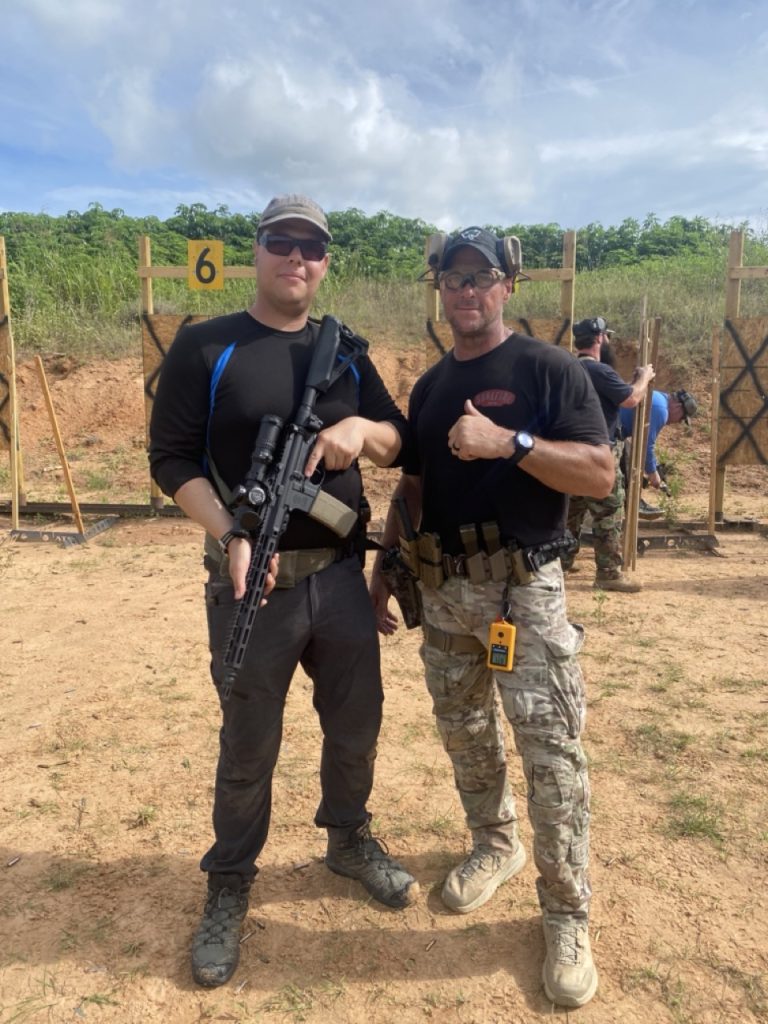
Now, this post isn’t an AAR with a play by play of everything we did. My intention is to share my overall experiences, especially because I’d never been to a carbine class, much less one led by Bill. I’ll say this now, carbines aren’t exactly difficult to shoot. You get three points of contact to stabilize the weapon and minimal recoil. For many years this was part of my reasoning for putting off carbine training. That said, Bill was going to be in the area and if I was going to pay good money for such a class, I might as well go to the left-handed professional shooter’s course and get that sinister nuance out of him.
The Philosophy Of Blowers
Given my own experience taking other open enrollment courses, Mr. Blowers emphasizes scores and time standards a little more stringently than most. I appreciated the crystal clear reasoning for everything he did, as he took ample time to explain himself. He made many of his point to back his arguments through his myriad of personal stories relating to his former career as a SWAT cop in the Sea-Tac metro area. He is a hell of a storyteller which is a key skill for anyone in an education role. It’s probably because I’m from a declasé working-class background and have never had a salaried job, but I found his sense of humor entertaining. That said as a man of reason, I respect that he justifies his way of thinking in accordance to his real-life experience. Anytime an instructor explains the why something is always better than acting like they’re all that or they just “know better.”
My favorite thing about his instructorship was his lack of dogmatism. Oftentimes in class, he’d show us several ways to do things and encourage the group to play around with them and see what worked best. Bill repeatedly told us this throughout the entire weekend. The only expectation was meeting the time and accuracy standards for a given exercise or to keep doing the work towards meeting them. Ultimately, I deduced that Mr. Blowers is a first-principles shooter. In other words, no dogma, just do precisely what you need to in order to make good, accurate hits on target quickly.
Stuff I Learned
A nasty storm with plenty of heavy rain unfortunately befell us during that training weekend. And the lot of us got muddy, wet and nasty shooting in various positions, especially on TD-1. But that builds character, right? We spent a good portion of TD-1 checking zeros at various distances (10,25,50,75 and 100 yards). All of us got plenty of exercise walking up and down the rifle range with our carbines and gear. Mr. Blowers heavily emphasized having a no-bullshit zero on the carbine. Everything related to defensive carbine shooting builds off of this zero, especially the concept of height over bore. HOB is so critical that it merit its own article with more details and examples, frankly. Because iron sights, dots, scopes, etc sit fairly high from the centerline of the bore on ARs, shots do not align correctly at closer distances. Naturally one has to aim higher to offset the impact and hit the intended target. We spent a lot of time in class going over these impacts at various distances, because Mr. Blowers’ goal was for his students to deeply understand where and how their rifles need to be aimed. After all, everyone is accountable for every projectile they fire–regular Joe or SWAT cop.
We practiced common shooting positions and were able to see how they affected accuracy first-hand. We spent a lot of time burning reps on things like low-ready, high-ready, emergency reloads from different positions, etc. It was a great chance to finally put my LSA carbine with the ARIC through its paces. And the inclement weather which produced even more mud and dirt only made it more fun! We shot and had the chance to burn so many reps that even though the class ended on Sunday evening, my firing grip was sore until the following Wednesday. Practically speaking, I understand that shooting carbines isn’t that hard. But I was able to walk away with more nuanced understandings of their employment.
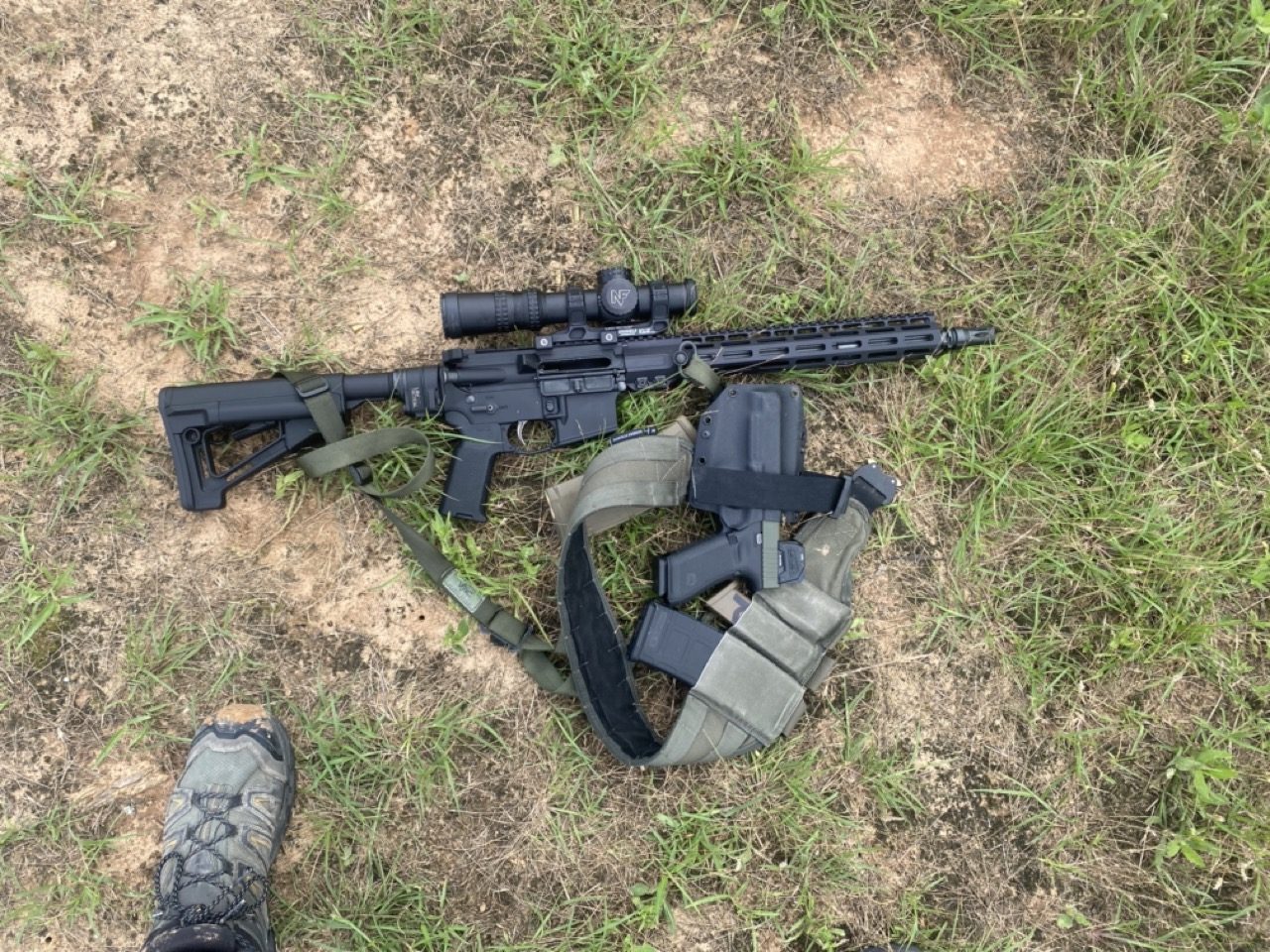
Guns And Gear
Because I had never been to a carbine class, much less a “high end” one, I was actually very interested in what other guns and gear students brought. For context, Tap Rack Tactical classes are on the more expensive side. As a consequence, I couldn’t help but notice that most students were serious, and so was their gear. One of the things that surprised me the most was that 80% of carbines on the line were suppressed. SOLGW was also well-represented. Except for one student in particular who had an alternative weapon system, everyone had an AR. The student body as a whole had their AR carbines set up quite smartly. Tactical lights, modern M-LOK rails, Unity mounts, etc. Unfortunately, a gentleman who was shooting to my left had a 16″ carbine with a compensator. I’ll be honest that was not the most fun for me. Out of courtesy to others, maybe don’t bring an AR with a compensator to a class next time? 90% of the guns had red-dot sights. I didn’t see as many LPVOs as I would have expected. On the first day there were two more shooters besides me with an LPVO equipped rifle. By day-two, they both switched to ARs with red-dots and I was the only nerd with an LPVO on the line. (In fairness, I wanted to make the most of this class and have a chance to actually “use” the ATACR LPVO I have. And for what it’s worth, my backup rifle was topped with a zeroed Trijicon Accupower to boot. LPVO Gang!) I don’t regret sticking to an LPVO during this class. One of my goals as a “gun writer” is to increase my awareness and practical knowledge of these kinds of riflescopes.
I also learned some subtleties about running an AR with the ARIC. For example, low pressure .223 Remington spec rounds like PMC Bronze didn’t cycle reliably. You also want a bolt catch that gives you as much leverage as possible on your reloads. And for the love of God, make sure your mags are fully seated. Ammo-wise, stick to cartridges you have vetted or 5.56mm NATO pressure cartridges in general. I was shooting IMI 62-grain M855 Green-Tip with no problems.
In all, it was nice to shoot something else besides pistols for a change. I have a better appreciation for the nuances of carbines and what I can do with my own AR.
Springfield Armory’s 2020 Line. No, not a throwback year.
I continue to enjoy this year of odd calibers. While rimfire isn’t necessarily ‘odd’ by any stretch, the fact that it is getting a strong series of updated offerings is very fun to see.
Springfield is joining this lineup, and they didn’t even give it a funny name this time.
The Model 2020 Rimfire family offers shooters a refined rimfire rifle with all the quality and performance you’ve come to expect from Springfield Armory. Offered in both Classic wood-stocked and Target synthetic-stocked versions, the Model 2020 Rimfire carries an impressive accuracy guarantee and the heirloom quality of a firearm you will keep in your family for generations.
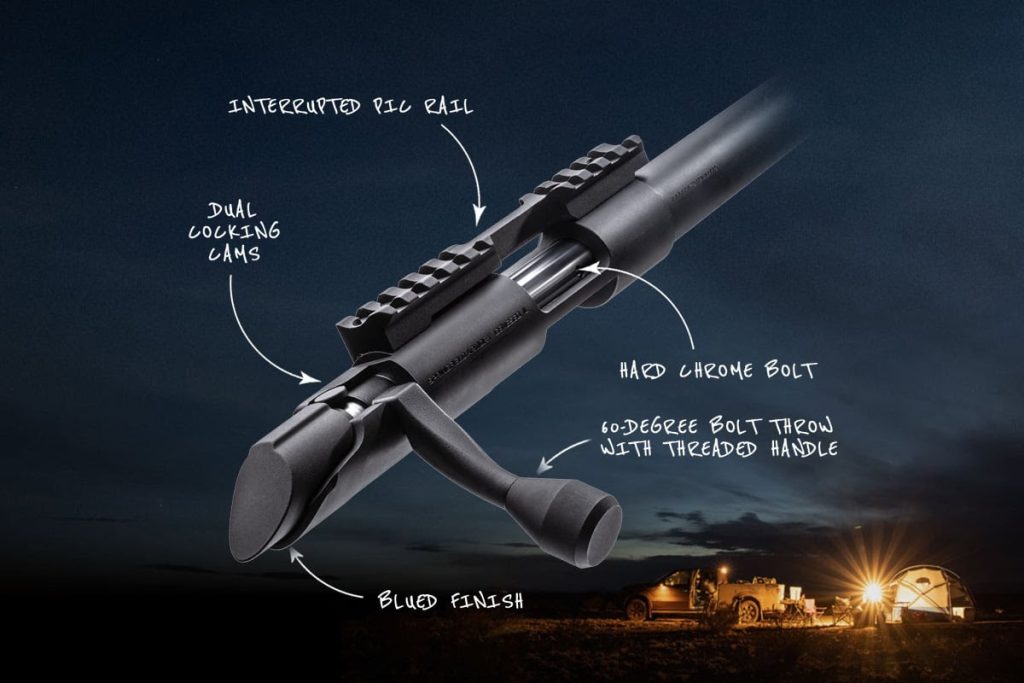
Outperforming other rifles in its class, the Model 2020 Rimfire action features dual cocking cams for lightning-fast, smooth cycling and a hard chrome bolt, ensuring flawless operation. The 60-degree bolt throw enhances speed and ease of use while the interrupted picatinny rail delivers a solid foundation for the optic of your choice.
Seeing rimfires continue to be offered in new models means shooting in an often overlooked semi-casual field will continue to flourish. We tend to undervalue our .22’s because they aren’t “serious” calibers in this day and age where defense is the primary motivator. But they are unmatched support.
The Pepperbox – An Early Repeater
Early repeating firearms are fascinating to me. Whenever someone says that the Founding Fathers could never picture a repeating weapon, I laugh. Ever since early firearms were created, we have looked for ways to make them more effective and efficient. One of the early methods that made its way to the modern world was the pepperbox.
The pepperbox is a multi-barreled gun that’s similar to a revolver. It features multiple barrels that often rotate around a firing device, although that’s generalized. Several designs used fixed barrels with rotating firing pins, although rotating barrels are more common. They differ from revolvers in the fact that each barrel is also a cylinder. The name comes from the gun’s multi-barrel look that often looks like the top of a pepper shaker.
What Is a Pepperbox
A pepperbox can be any type of firearm. There were rifle and shotgun variants, but the most common was a handgun. Multiple barrels got quite heavy, and extending them to long gun lengths would make quite the weapon. Pepperbox weapons differ from volley guns in that they only fire a single barrel at a time. Arguably the first pepperbox was a modified volley gun from the 15th century designed to fire a single barrel at a time.
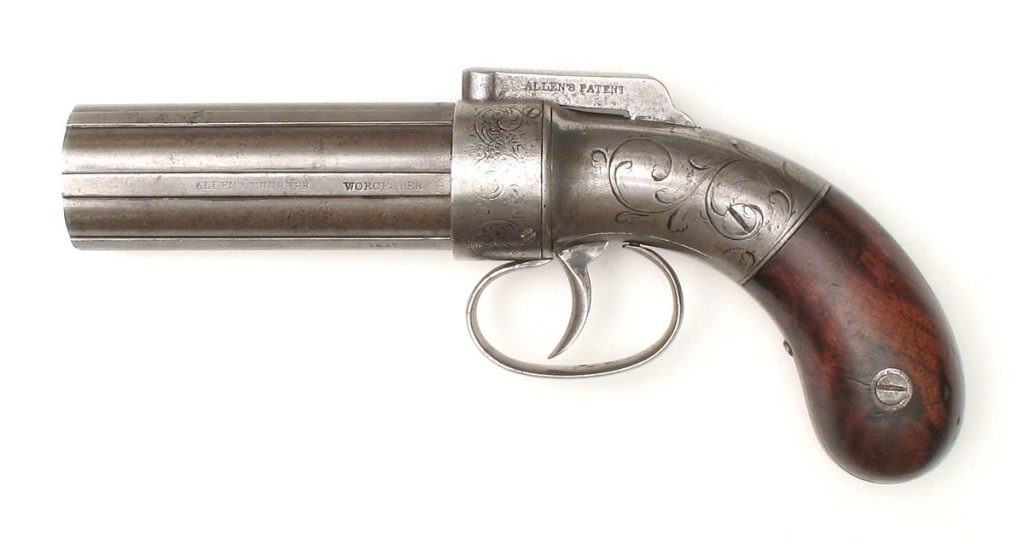
The pepperbox picked up speed in the late 1700s and rode the coattails of two-barrel turnover pistols. If two barrels is good, then even more barrel is better, right? Gun makes like Nock, famed designed of the massive volley musket, designed several rotating barrel pistols as did gunmakers in Belgium.
The Impact of the Pepperbox
These early models were flintlock pistols and quite expensive due to the materials and rather complicated designs in an era of handmade guns. As firearms evolved, so did these spicy little guns. They became percussion cap pistols, and when the industrial revolution came about, they became much cheaper. They became fairly popular due to the firepower they offered.
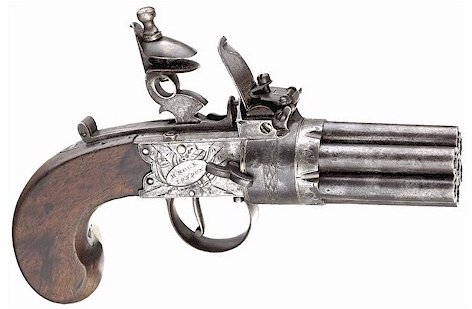
There were several design variants of percussion cap guns. Some required the user to rotate the barrels manually and to cock the hammer. Others worked like a single-action revolvers, and the barrels rotated when the user cocked the hammer. Some fired from the top barrel, and others fired from the bottom barrel.

Most were designed for civilian self-defense and for close-range use. Most were smoothbore, even though they existed in eras where rifling was common. They also lacked sight because putting a sight on each barrel would be expensive, heavy, and makes carry awkward.
That’s a large part of why they remained unissued by most military forces. While some officers may privately purchase a pepper box, they were never widely issued. They remained an affordable multi-shot weapon for civilians to defend themselves.
The Decline of the Pepperbox
Once Samuel Colt and his Colt Paterson revolver came to life, the pepperbox was done for. The revolver was much lighter, could feature a sight, and actually took less material to make. They were the future, and revolvers were the first step toward the decline of the pepper box. Then metallic cartridges came out and really snuffed ‘em out like a smoker with a cigarette butt.
After that, the main appeal became affordability. Market demand and all being what it is, the price dropped, and they remained a popular budget option for repeating firepower. Although, I’m convinced nothing in the gun world stays dead forever.
The Modern Pepperbox
There are a few cartridge pepper box designs. Remington made the Zig Zag derringer in 1860 as a six-barrel rimfire cartridge pistol. We also have guns like the Shatuck Unique and alter the Mossberg Brownie, which featured four barrels and a rotating firing pin.
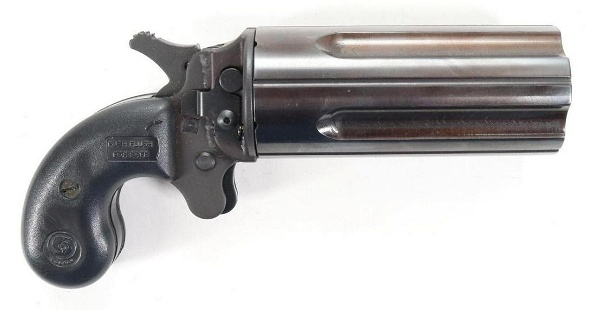
Fast forward, and Cobray produced a .45 Colt/.410 Pepperbox because, of course, they did. The COP derringer could also be considered a pepperbox. However, anything beyond novelties and replicas isn’t common these days.
The Pepper Box remains an interesting piece of firearm history, especially as a part of repeating firearms history. While seemingly unusual, they were popular for a time, and their production hastened the development of the revolver, which we still use to this day.
CWD Not Yet Found in Humans
If you do any hunting of deer, elk, mulies, or moose in the United States you may have heard about today’s subject – Chronic Wasting Disease. I found out the other year that the family property that I hunt had been absorbed into a CWD monitoring area and that’s when I started educating myself. The expanding boundaries of the monitoring area has caused me all kinds of consternation which I’ll get into in a bit, but I saw a recent article which at least provided some reassuring news – there is as yet no evidence in surveillance populations of human beings being infected by CWD – by consuming meat or by any other exposure to infected game animals. This is excellent news for hunters.
Background
Chronic Wasting Disease (acronym CWD) is one of a collection of diseases caused by “prions” – abnormal proteins that are transmitted animal to animal (or person-to person) which cause a disease state of the central nervous system. More specifically it causes neurodegenerative disease that is inevitably fatal.
Prions are a “neither fish nor fowl” kind of thing. They aren’t actually alive, and they aren’t like viruses or bacteria. They are proteins that manage to reproduce themselves, and they are notoriously difficult to “kill”. Standard autoclaving procedures won’t do it, most chemical treatments won’t do it – they’re kind of scary that way.
There are prion diseases that affect humans and prion diseases that affect certain animal species. With few exceptions the diseases don’t seem to cross species, but research is ongoing, particularly with a prion disease that affects cattle – BSE or Bovine Spongiform Encephalopathy or “Mad Cow Disease” – which appears to have some rare cases of human transmission.
Chronic Wasting Disease (CWD) is a prion disease that affects ungulates – elk, mule deer, white-tailed deer, sika deer, and moose.
History
CWD was first identified in the 1960’s in a captive deer population in the western US and was discovered in wild populations in 1981. Since then there has been continued spread despite ongoing control efforts.
Current research indicates that spread of CWD occurs among cervid populations via body fluids like saliva, feces, urine, and blood. The contact can be either direct or indirect as the prions apparently do not degrade in the environment for extended periods of time and can remain infectious for years. These proteins aren’t “alive” in the traditional sense, so they are often resistant to traditional means of disinfection.

As of July 2023, thirty-one US states and four Canadian provinces have been affected by CWD.
Also affected are reindeer and moose in some parts of Scandinavia and some imported deer in South Korea.
Control measures
Control measures vary by region/state and governing body. Where I hunt the state game commission has jurisdiction. It has implemented measures such as banning wildlife feeding and bait stations in affected and surveillance areas – even on private property. It has also banned the use of urine lures (Prions can be transmitted via urine). It has banned the removal of deer carcasses taken in a restricted area until neurological tissue has been removed. There are only a handful of “approved” butchers you can take the carcass to as well. There are also “head bins” for those who butcher their own deer so the state can test the brain tissue, and then notify you via online code if your deer was positive.
Finding Balance
All of these control measures are obviously important, but it’s a balancing act between taking precautions to control the spread of the disease and causing a drop-off in hunting, which is the single main herd population control method. Not to mention that hunting pours millions of dollars into conservation coffers every year.
But if as a crossbow hunter I can’t have a feeder and I can’t use lures ( except maybe apple scent spray?) then that reduces my chances of success. Even more-so on a property that is two hours away, which makes it difficult to scout, even with cameras. Then there is the separate issue of antler restrictions to contend with. It’s a huge pain in the patoot and it causes me a lot of discouragement in my hunting life. Yes I am fully aware that it’s called “hunting” and not necessarily “harvesting”, but there has to be occasional success in order to provide positive reinforcement. I have not yet had that on family property in the CWD zone.
I paid money to go on a guided women’s hunt elsewhere last year because I got so discouraged on my own property. I’m not sure I’ll even buy a license this year. I have to pay extra for an out-of-state license and I feel like I am throwing away a hundred-plus dollars to hunt on a property which doesn’t offer me much chance of success.
BUT – at least the good news this week is that they haven’t found any hunters eating deer meat or handling infected carcasses that have caught CWD in 20-30 years. So I’ve got that going for me, which is nice.
Gunday Brunch 110: Tessah of Armed and Styled
Today we’re joined by Tessah from the YouTube channel @armedandstyled2117 – she is a squared away educator teaching about self-defense and concealed carry

